Spurs' immortal Tim Duncan retires without a whimper

Your teams. Your favorite writers. Wherever you want them. Personalize SI with our new App. Install on iOS or Android.
During interviews with Tim Duncan (a phrase roughly equivalent to “during photo sessions with the snow leopard”) the Spurs’ immortal never resisted an opportunity to josh with a teammate who happened to walk by. It certainly disturbed the rhythm of the conversation—if it can be said that one rhythmically conversed with Duncan—but he wasn’t sending a message to the reporter, but rather to the teammate. It said: I’m not above you. I’d rather be with you than sitting here talking about myself. So keep the shower running, and I’ll be there soon.
Duncan hid in plain sight when he was on the court, so his departure was destined to be a non-action event, coming in a press release (with no direct quotes from Duncan or anyone else) from a Spurs public relations department that over the years has figured out how to deal with his Howard Hughes ways. Maybe, just maybe, there will be a press conference down the road, during which a fidgety Duncan will likely be checking the exits after a few vanilla comments.
• Duncan announces retirement | Spurs add Gasol to replace Duncan
Born in St. Croix and schooled at Wake Forest, Teemy—as he was adorably called by his French-born teammate Tony Parker—was not a man made for highlight reels and social media. He was, though, a man made for his city. San Antonio wrapped him in its no-nonsense arms and squeezed tight, especially after he refused a tempting free-agent offer to abscond to Orlando in 2000. It seems so logical now that the Alamo would trump Disney World, but not back then. Duncan had no Parker or Manu Ginóbili beside him, and his fellow twin tower David Robinson was getting long in the tooth.
But Duncan stayed, and four more championships (he won his first with the Admiral in 1999) followed. Though there was nothing remotely regal about his demeanor or, for that matter, his island wardrobe, Duncan’s championship record puts him in the company of kings. He trails (of course) 11-ringed Bill Russell (and a slew of other Celtics from their dynasty years) and, more relevantly, Kareem Abdul-Jabbar and Michael Jordan, both of whom have six. He retires with the same number of championships as worthies named Magic Johnson and Kobe Bryant, which seems about right.
• Retirement commemorative: A special farewell to Tim Duncan
Rare SI Photos of Tim Duncan
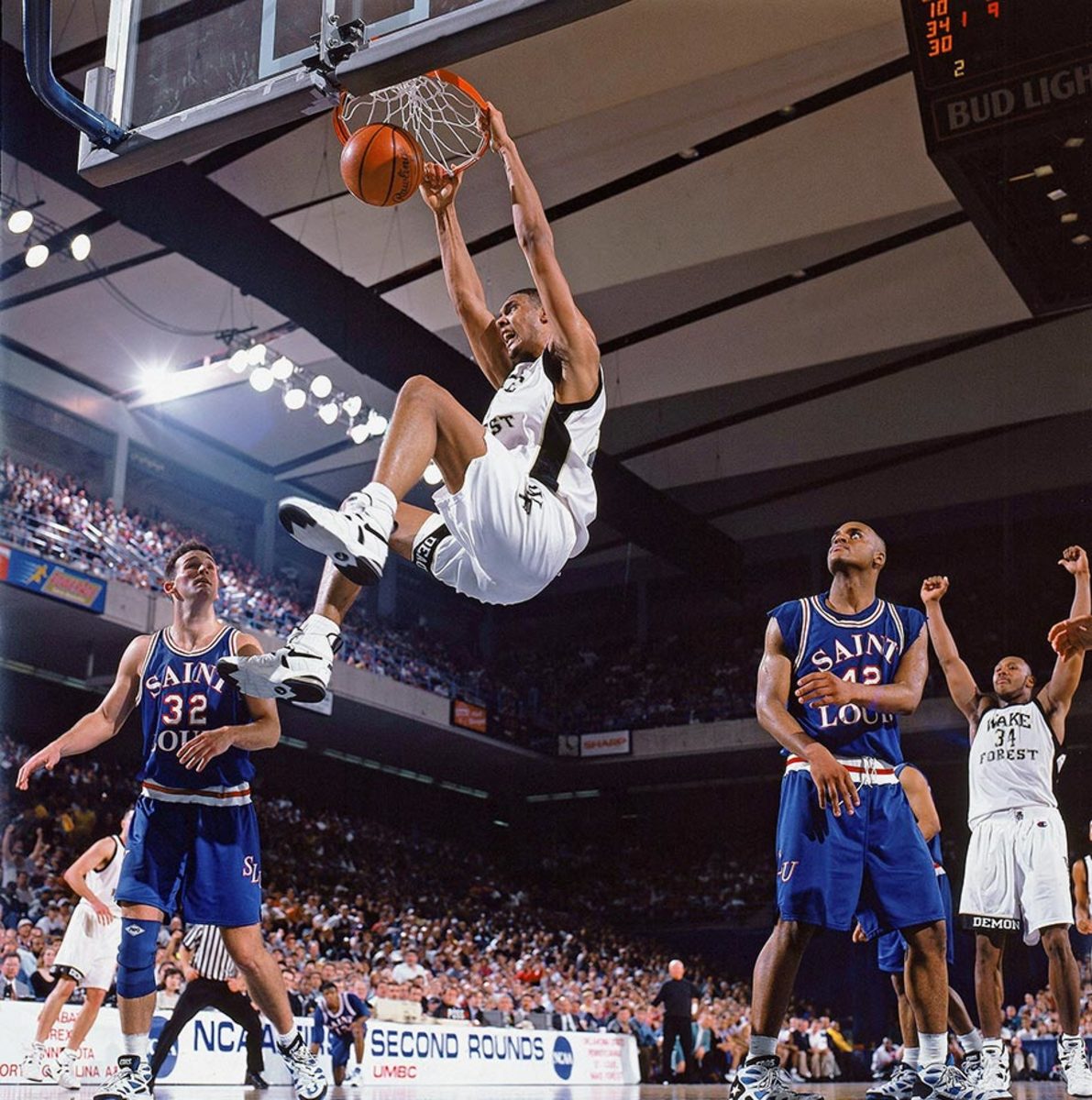
Tim Duncan dunks during Wake Forest's game against Saint Louis in the second round of the NCAA Tourament on March 18, 1995 in Baltimore.
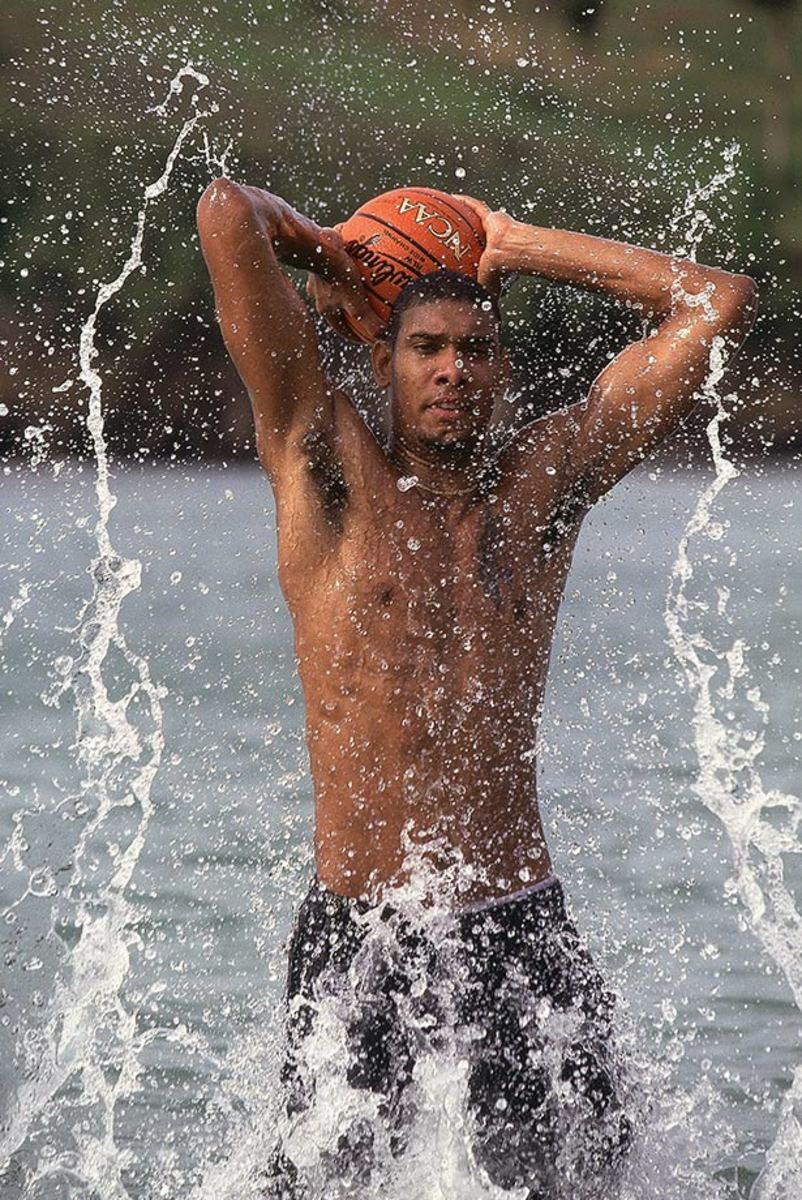
Tim Duncan poses during a photo shoot on Aug. 3, 1995 in Christiansted, St. Croix.
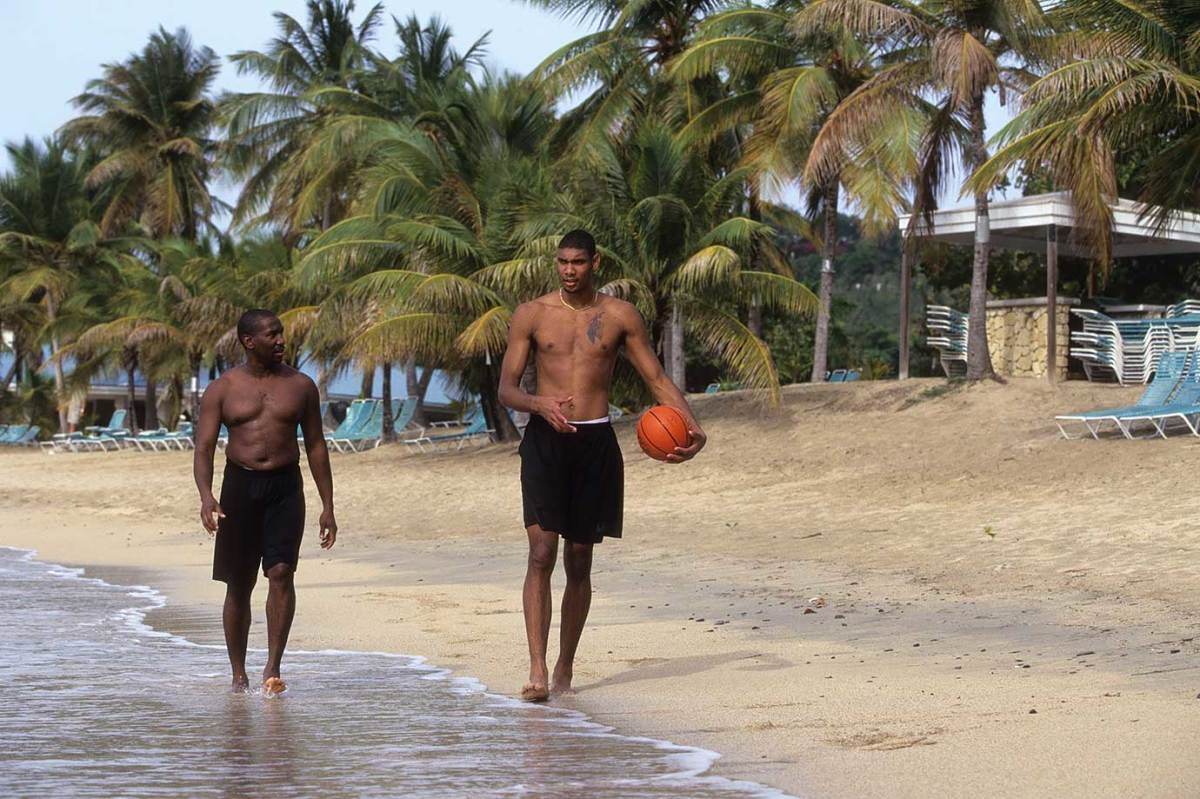
Tim Duncan walks with his brother-in-law Ricky Lowery on Aug. 3, 1995 in Christiansted, St. Croix.
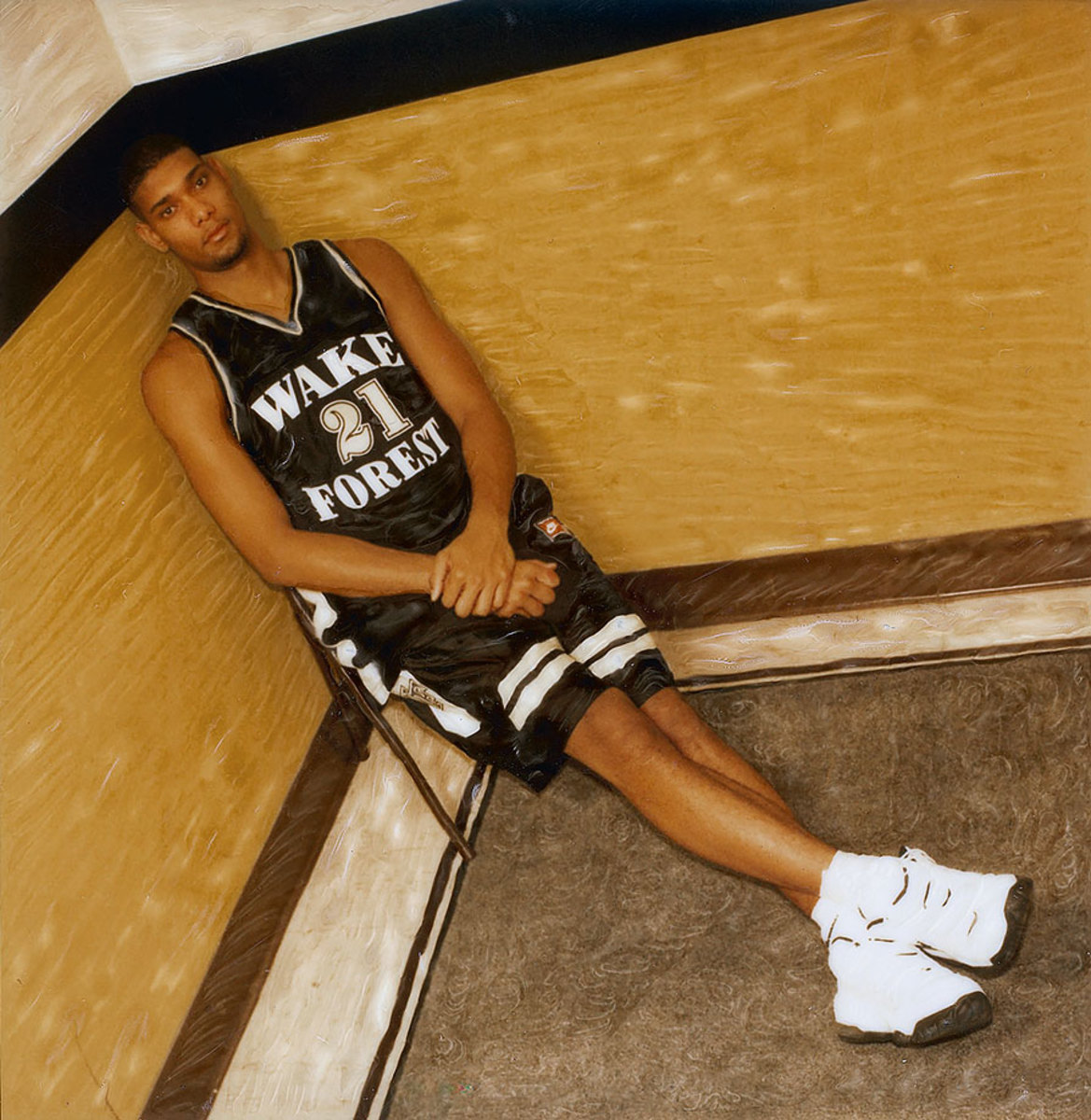
Tim Duncan poses during a photo shoot on Oct. 16, 1996 in Winston-Salem, N.C.
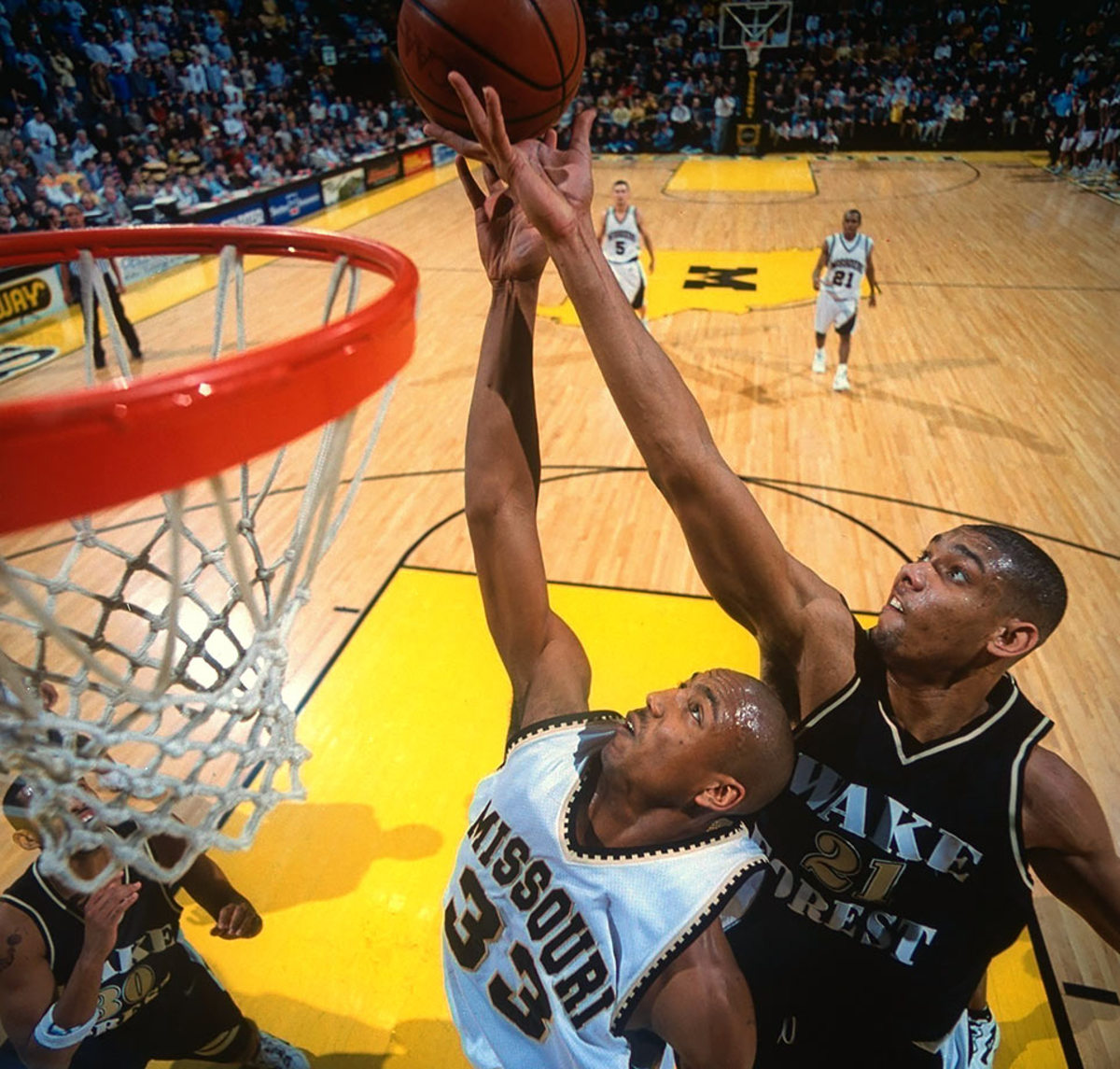
Tim Duncan grabs a rebound over Kelly Thames during Wake Forest's game against Missouri on Feb. 9, 1997 in Columbia, Mo.
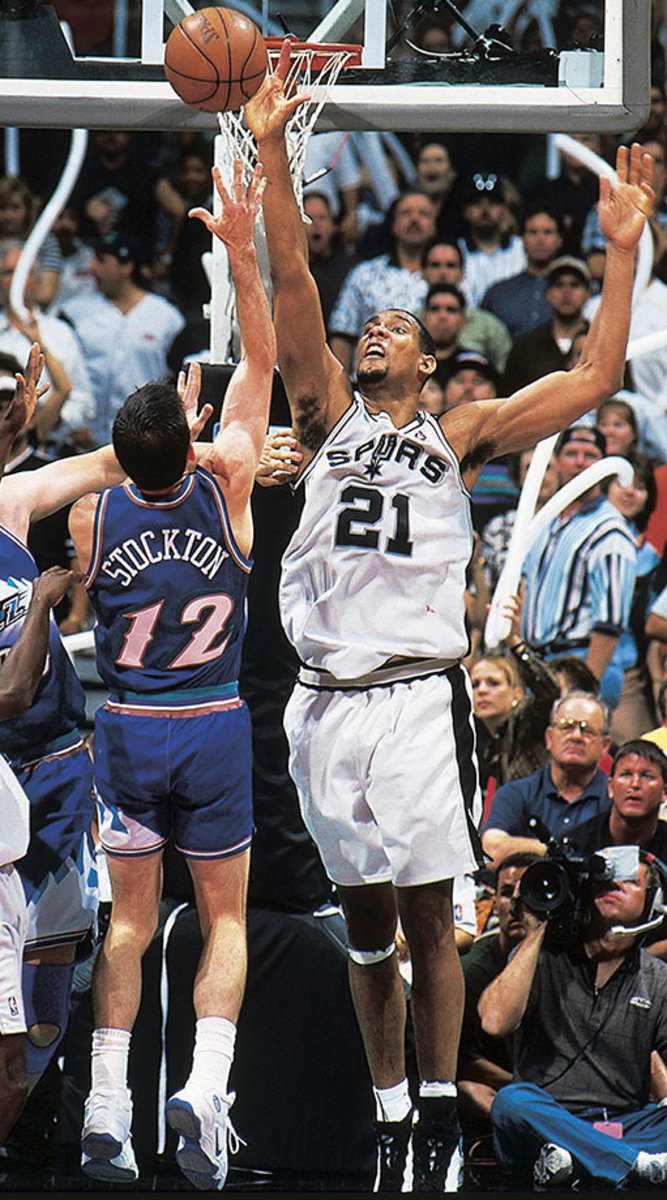
Tim Duncan blocks a shot by John Stockton during Game 4 of the Western Conference Semifinals between the San Antonio Spurs and Utah Jazz on May 10, 1998 in San Antonio.
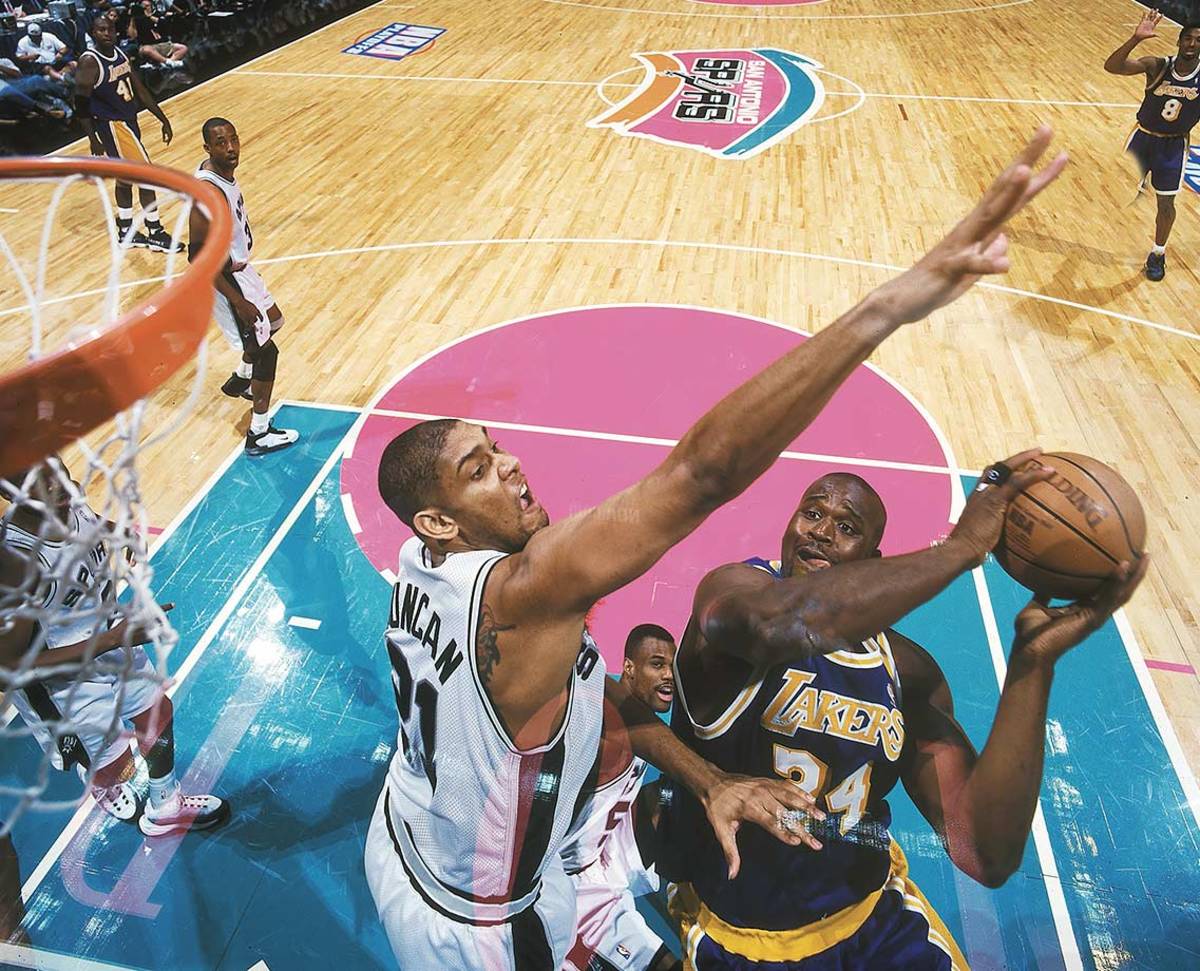
Tim Duncan defends against Shaquille O'Neal during Game 3 of the Western Conference Finals between the San Antonio Spurs and Los Angeles Lakers on May 19, 1999 in San Antonio.
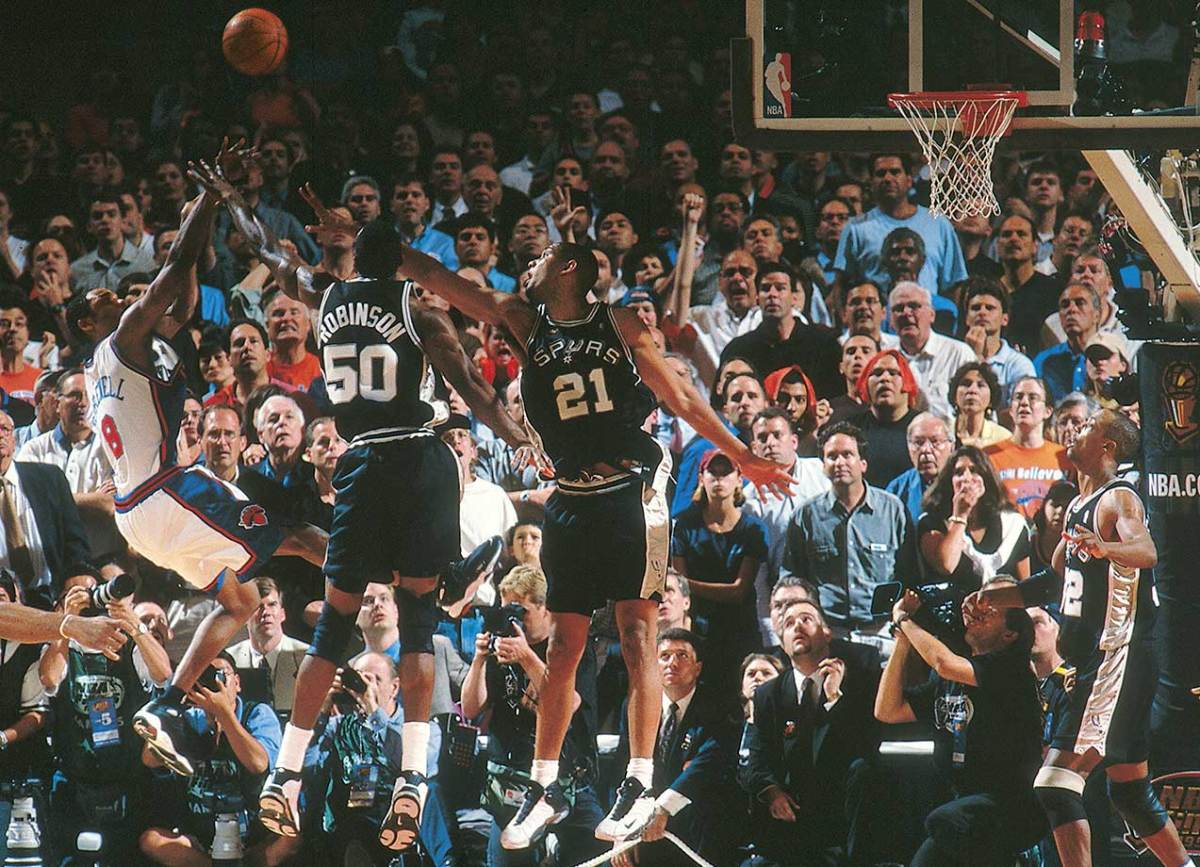
Tim Duncan and David Robinson defend against Latrell Sprewell as he misses the last shot of Game 5 of the NBA Finals between the San Antonio Spurs and New York Knicks on June 25, 1999 in New York City.
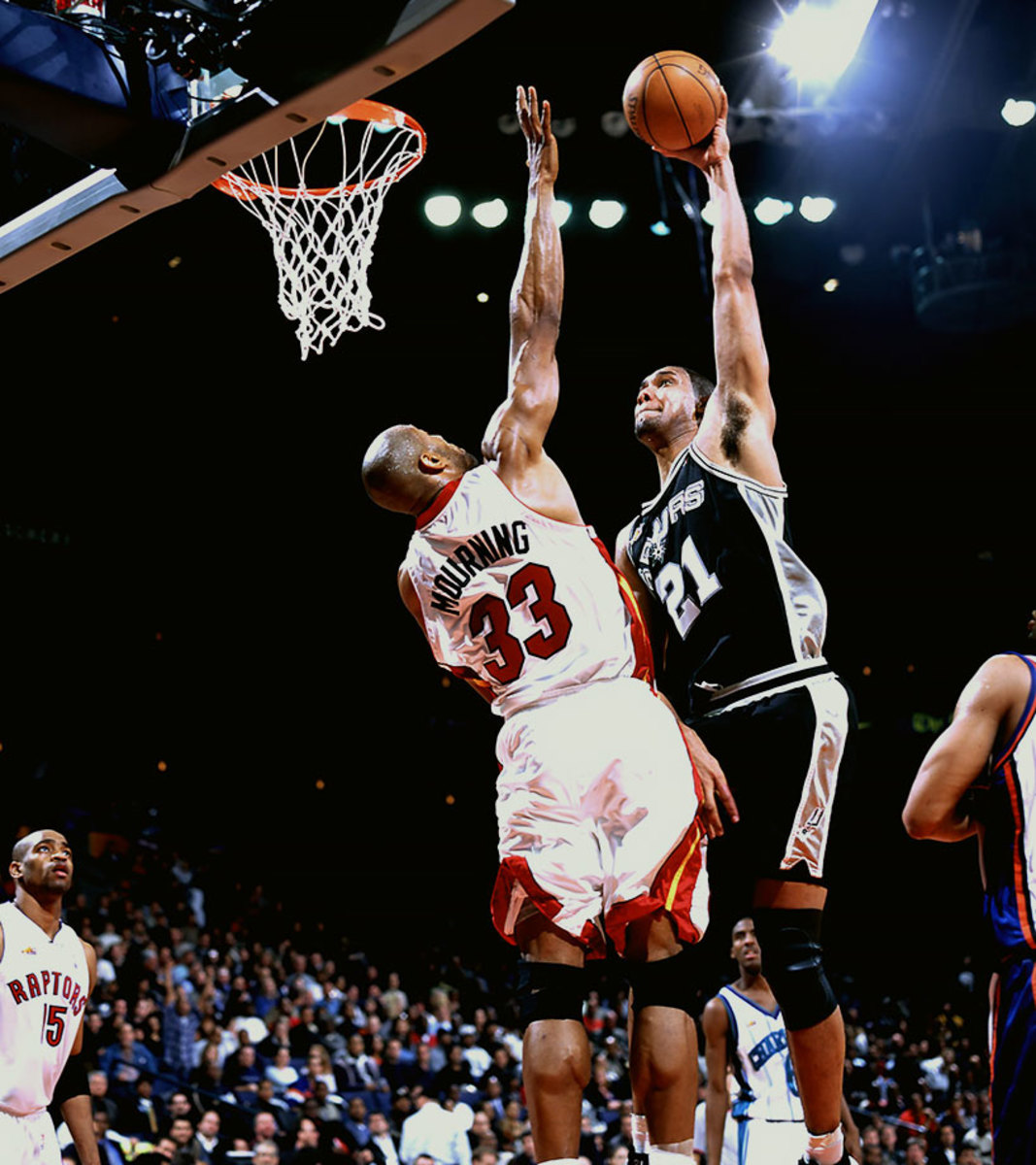
Tim Duncan shoots against Alonzo Mourning during the NBA All-Star Game on Feb. 13, 2000 in Oakland.
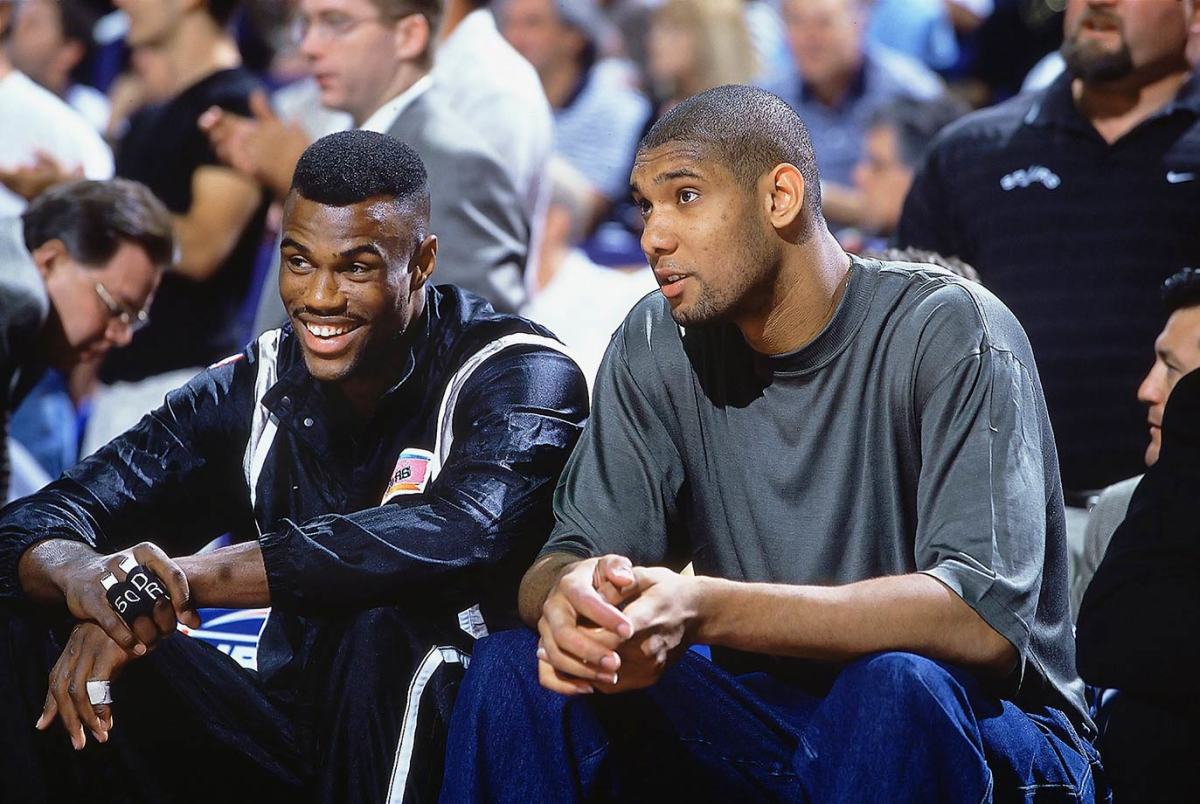
Tim Duncan and David Robinson watch Game 3 of the Western Conference First Round between the San Antonio Spurs and Phoenix Suns on April 29, 2000 in Phoenix.
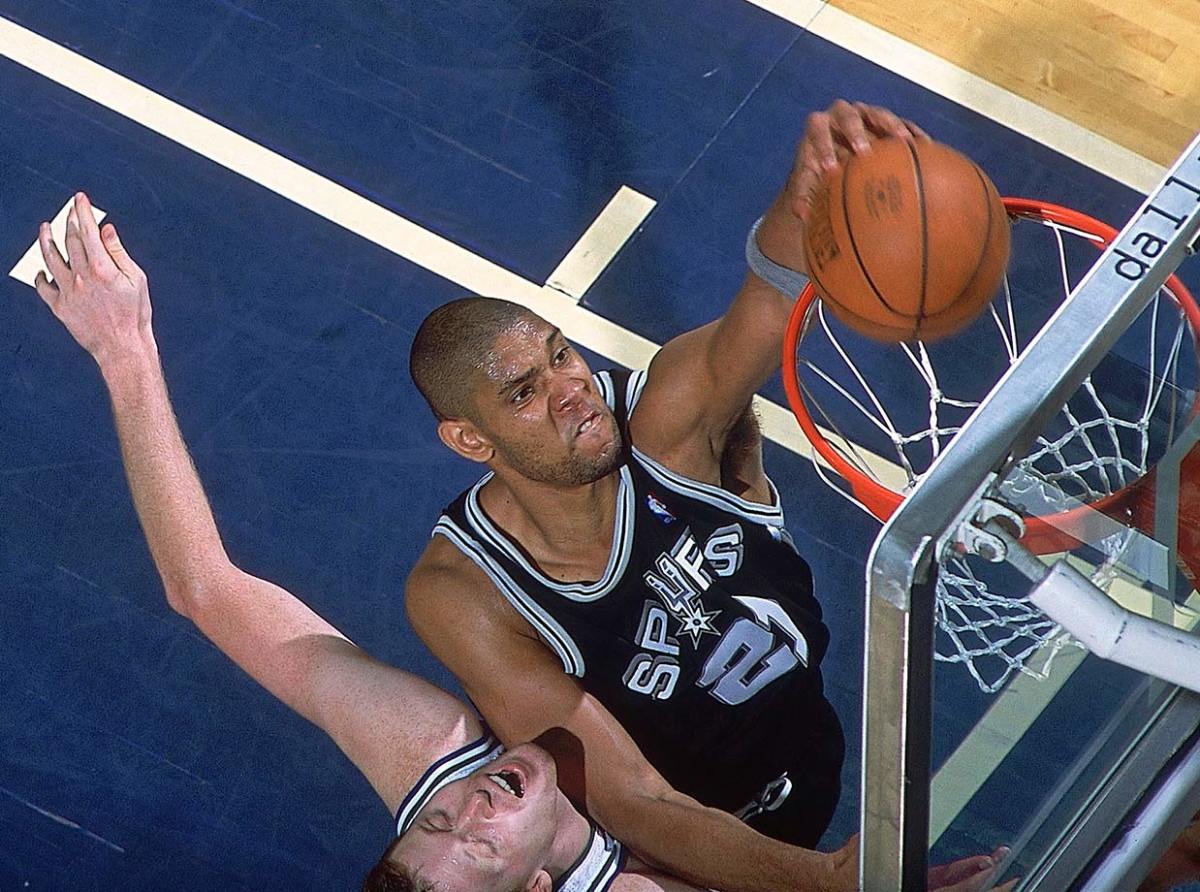
Tim Duncan dunks against Shawn Bradley during Game 4 of the Western Conference Semifinals between the San Antonio Spurs and Dallas Mavericks on May 12, 2001 in Dallas.
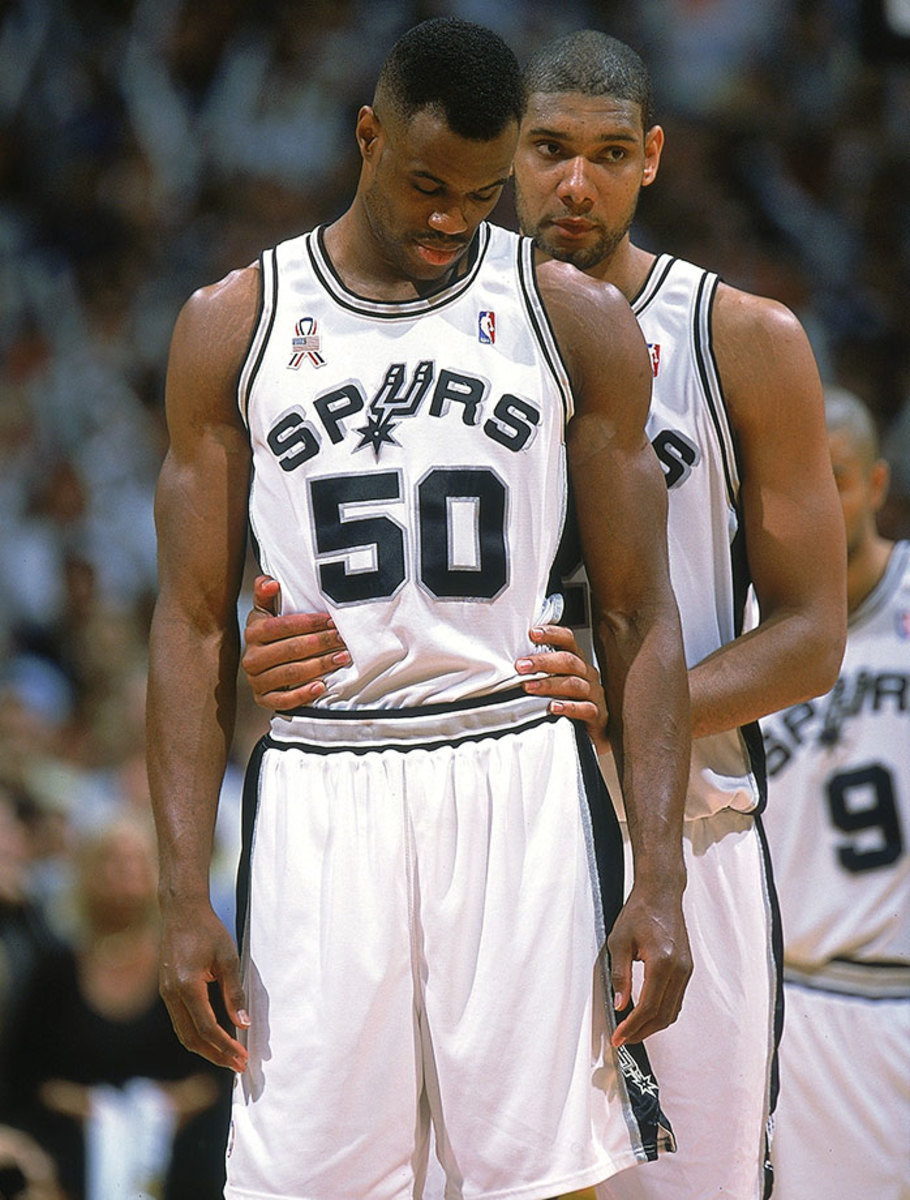
Tim Duncan consoles David Robinson during Game 3 of the Western Conference Semifinals between the San Antonio Spurs and Los Angeles Lakers on May 10, 2002 in San Antonio.
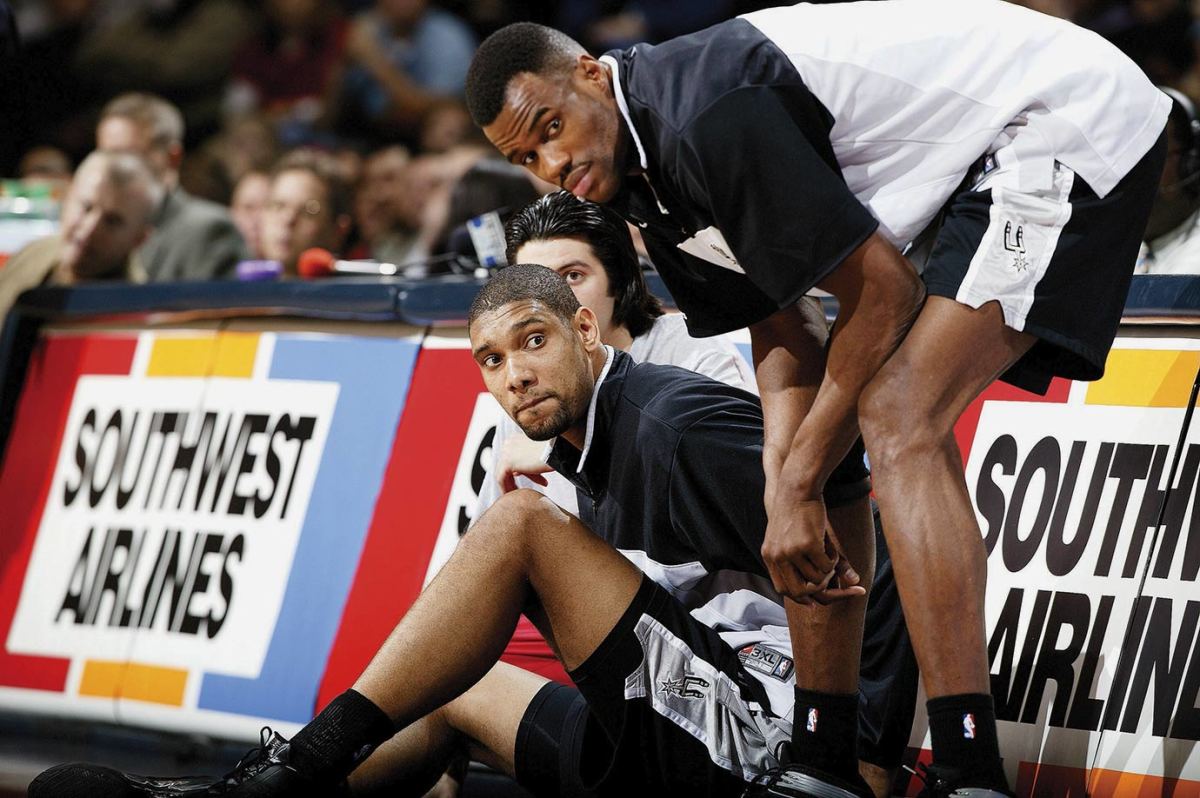
Tim Duncan and David Robinson look on from the floor during the San Antonio Spurs game against the Houston Rockets on March 2, 2003 in Houston.
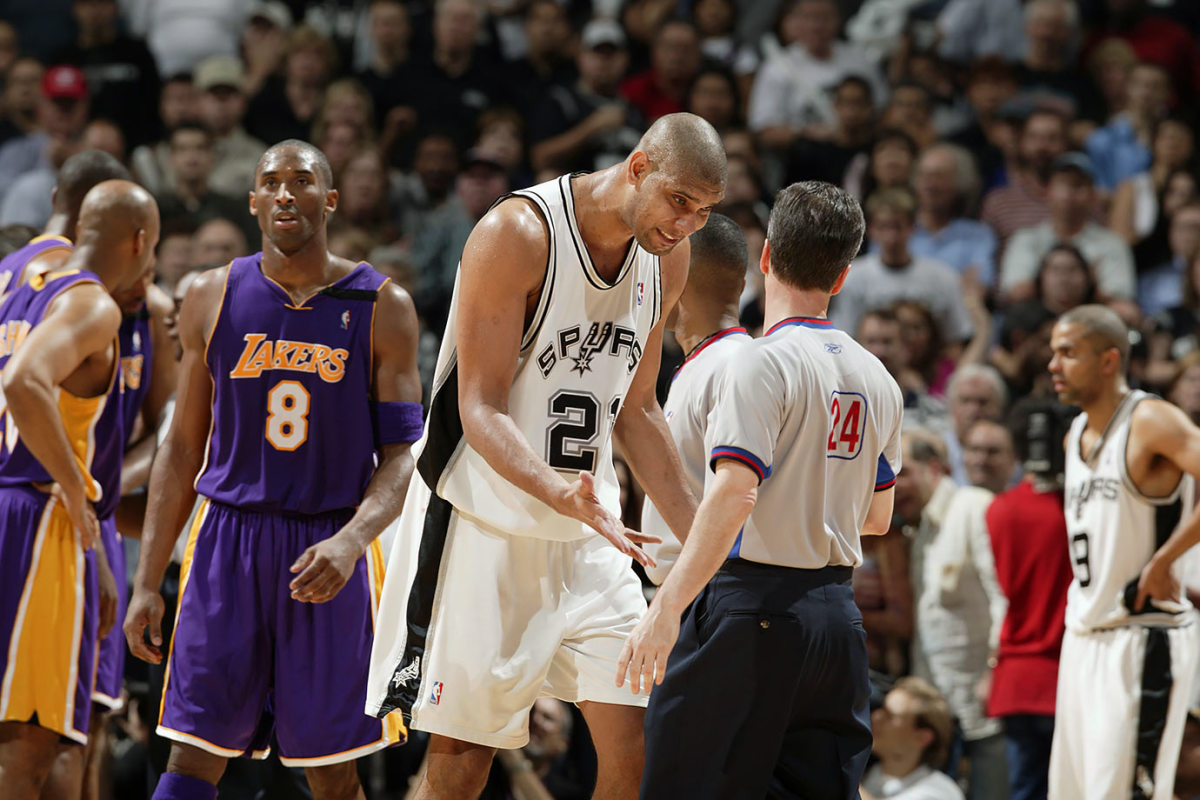
Tim Duncan argues with a referee during Game 1 of the Western Conference Semifinals between the San Antonio Spurs and Los Angeles Lakers on May 5, 2003 in San Antonio.
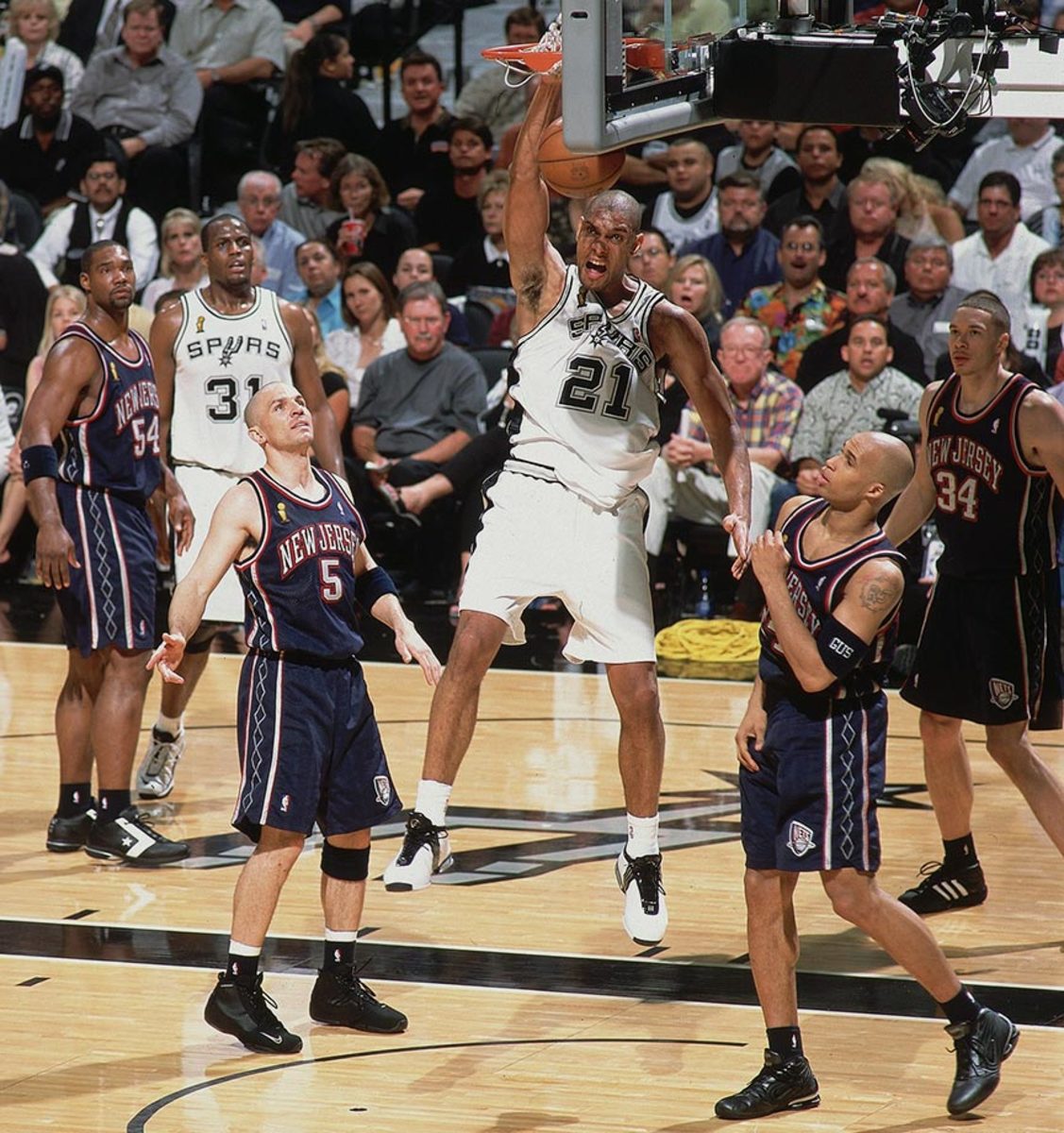
Tim Duncan dunks during Game 1 of the NBA Finals between the San Antonio Spurs and New Jersey Nets on June 4, 2003 in San Antonio.
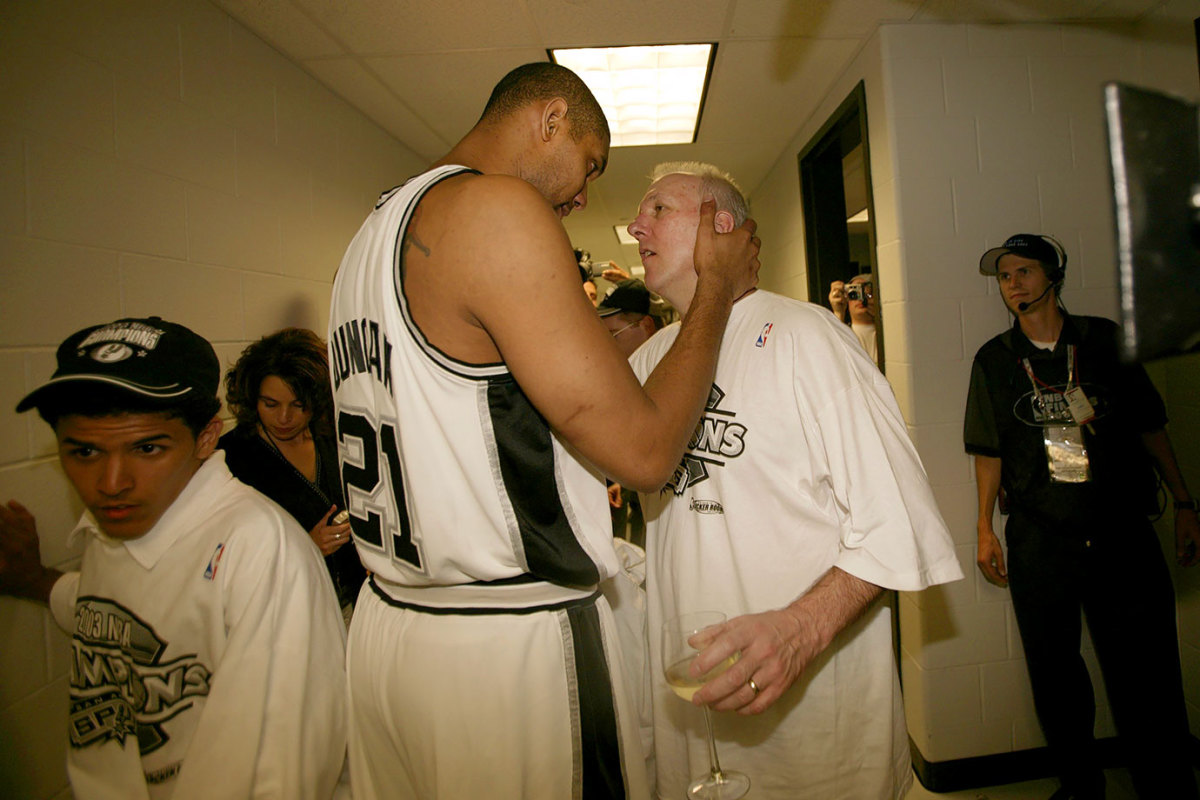
Tim Duncan and Gregg Popovich celebrate after winning Game 6 of the NBA Finals between the San Antonio Spurs and New Jersey Nets on June 15, 2003 in San Antonio.
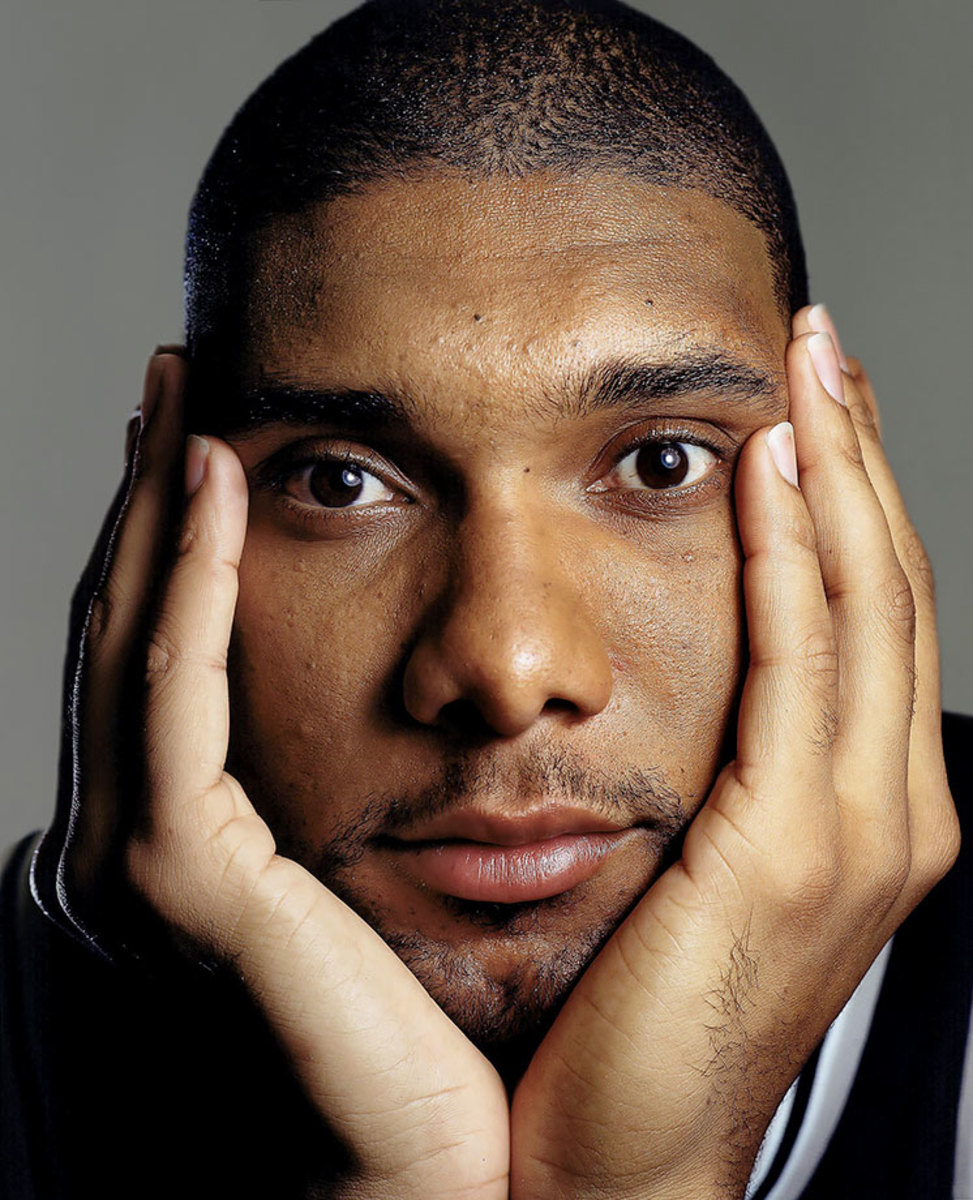
Tim Duncan poses during a photo shoot on Aug. 14, 2003 in New York City.
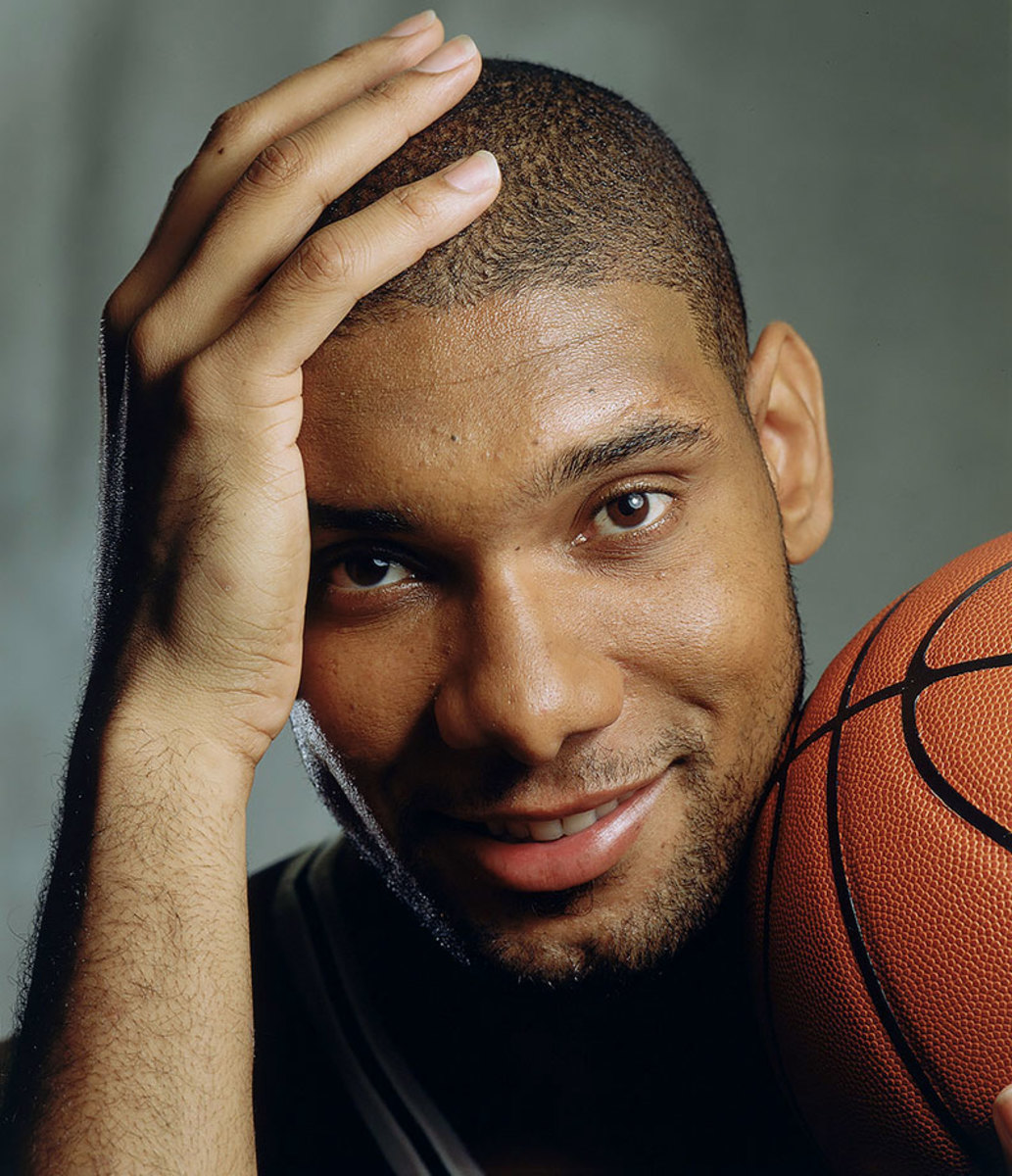
Tim Duncan poses during a photo shoot on Aug. 14, 2003 in New York City.
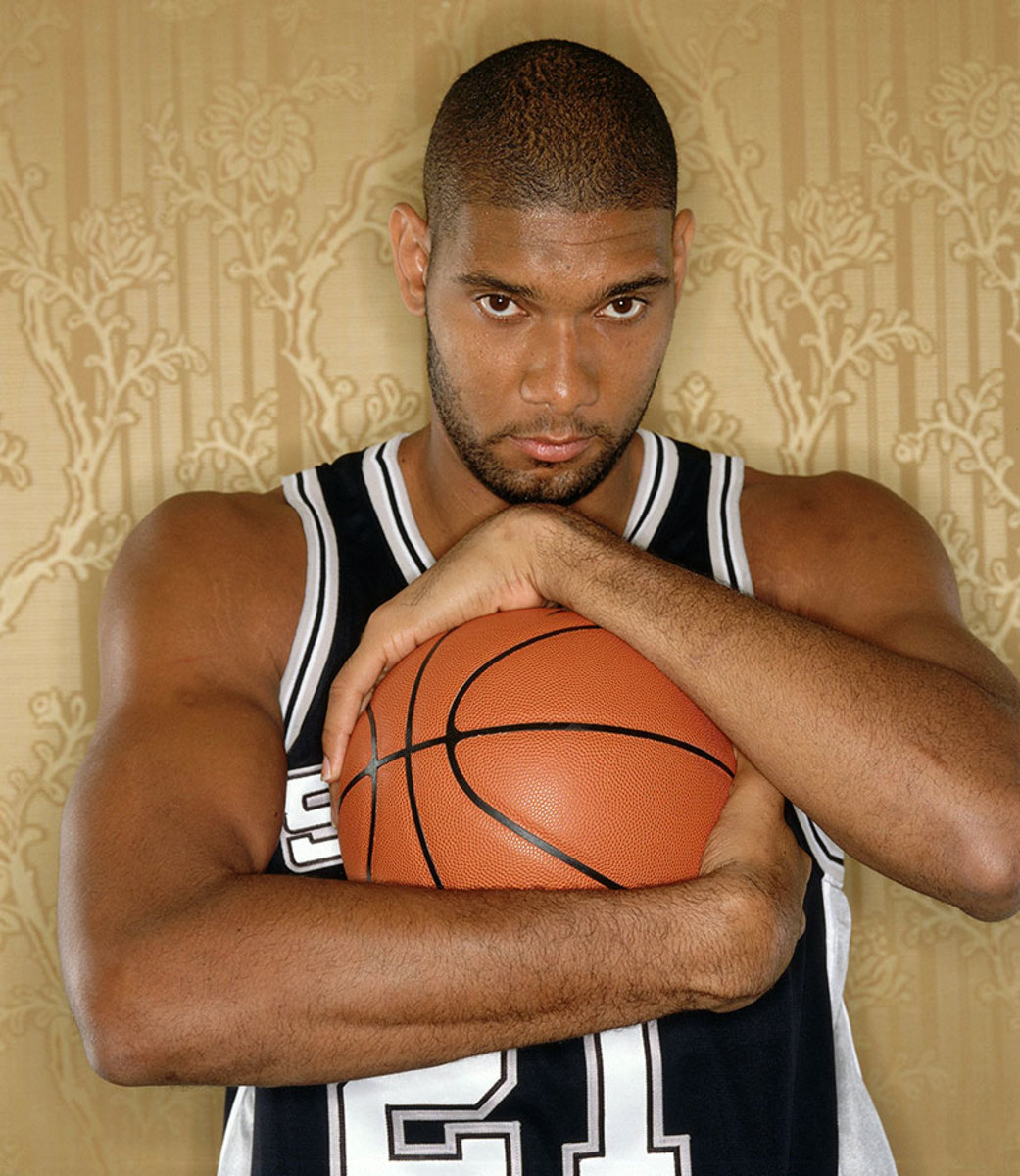
Tim Duncan poses during a photo shoot on Aug. 14, 2003 in New York City.
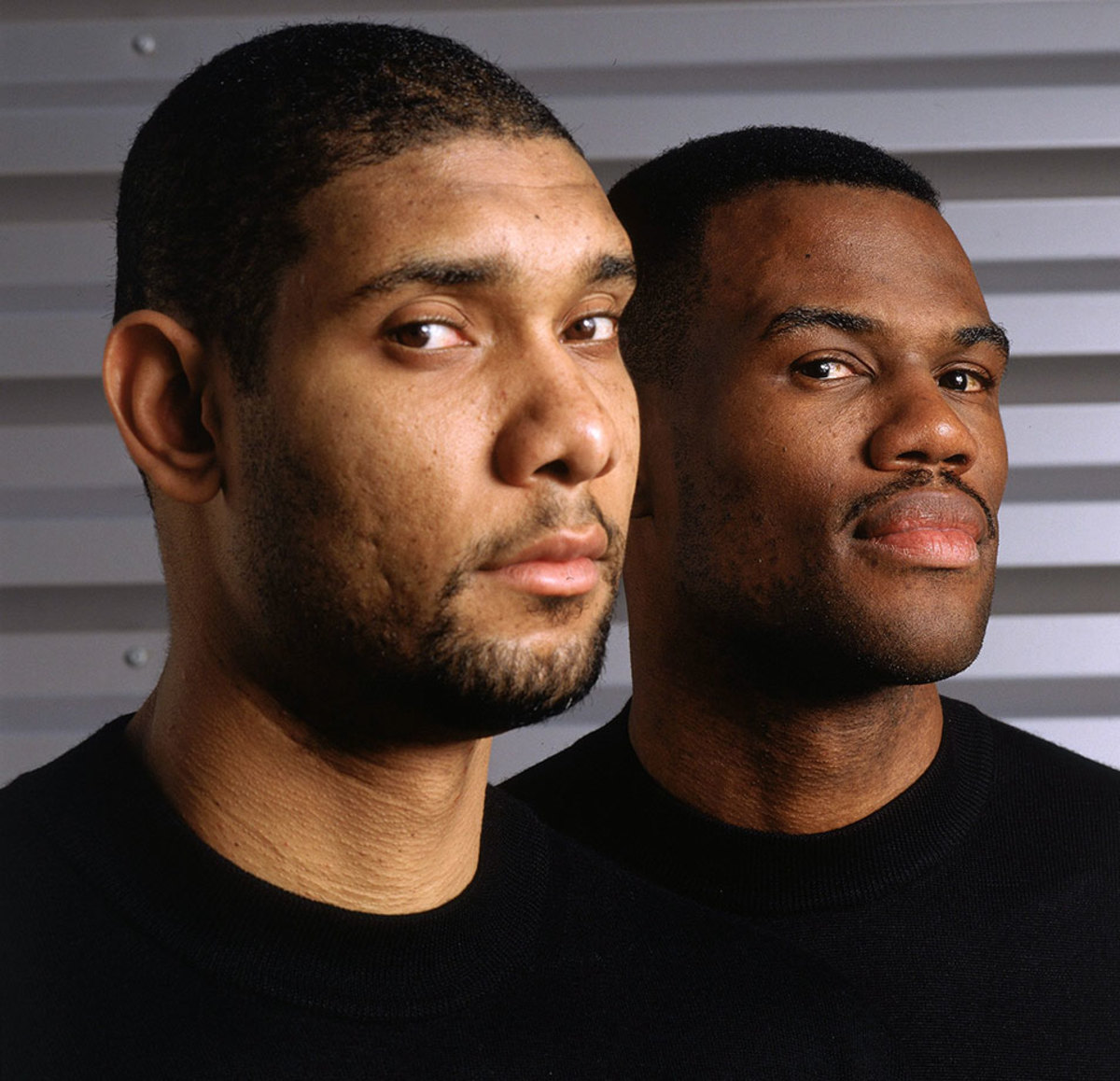
Tim Duncan and David Robinson pose together during a photo shoot on Dec. 3, 2003 in San Antonio.
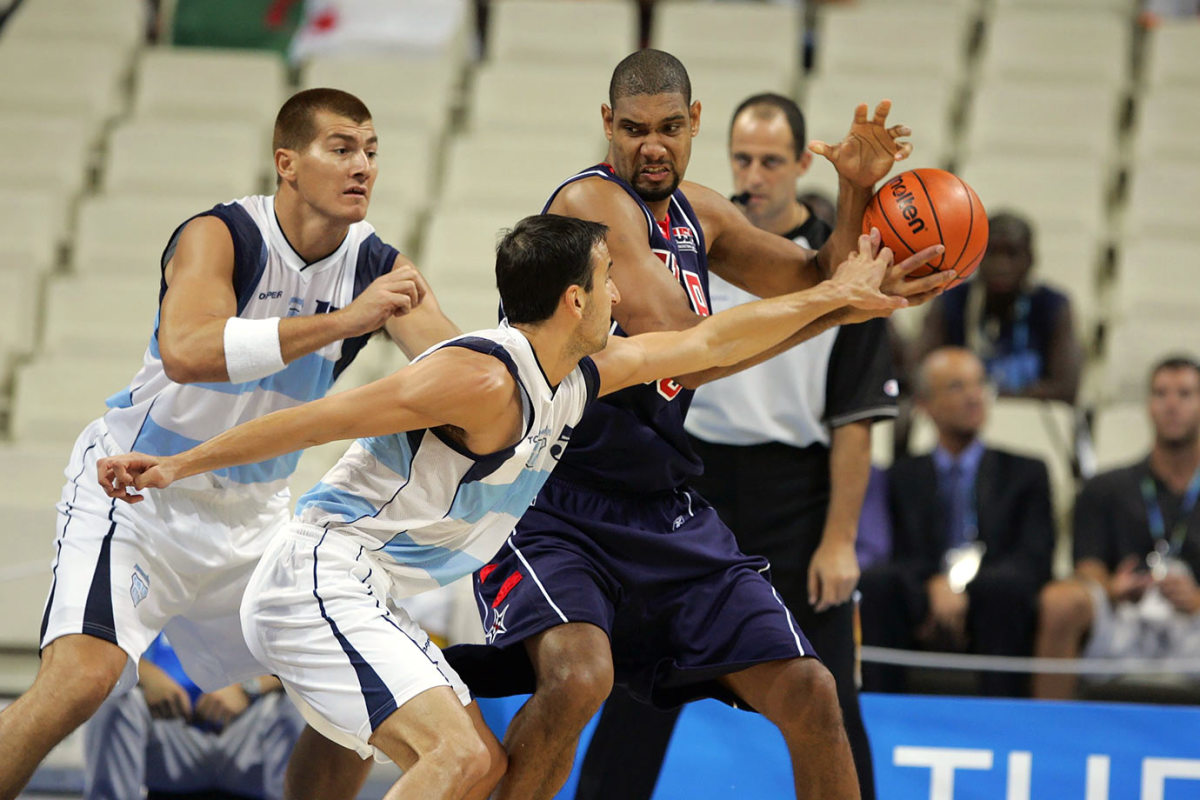
Tim Duncan tries to keep the ball away from Manu Ginobili during the Olympic Basketball Tournament Semifinals between USA and Argentina on Aug. 27, 2004 in Athens, Greece.
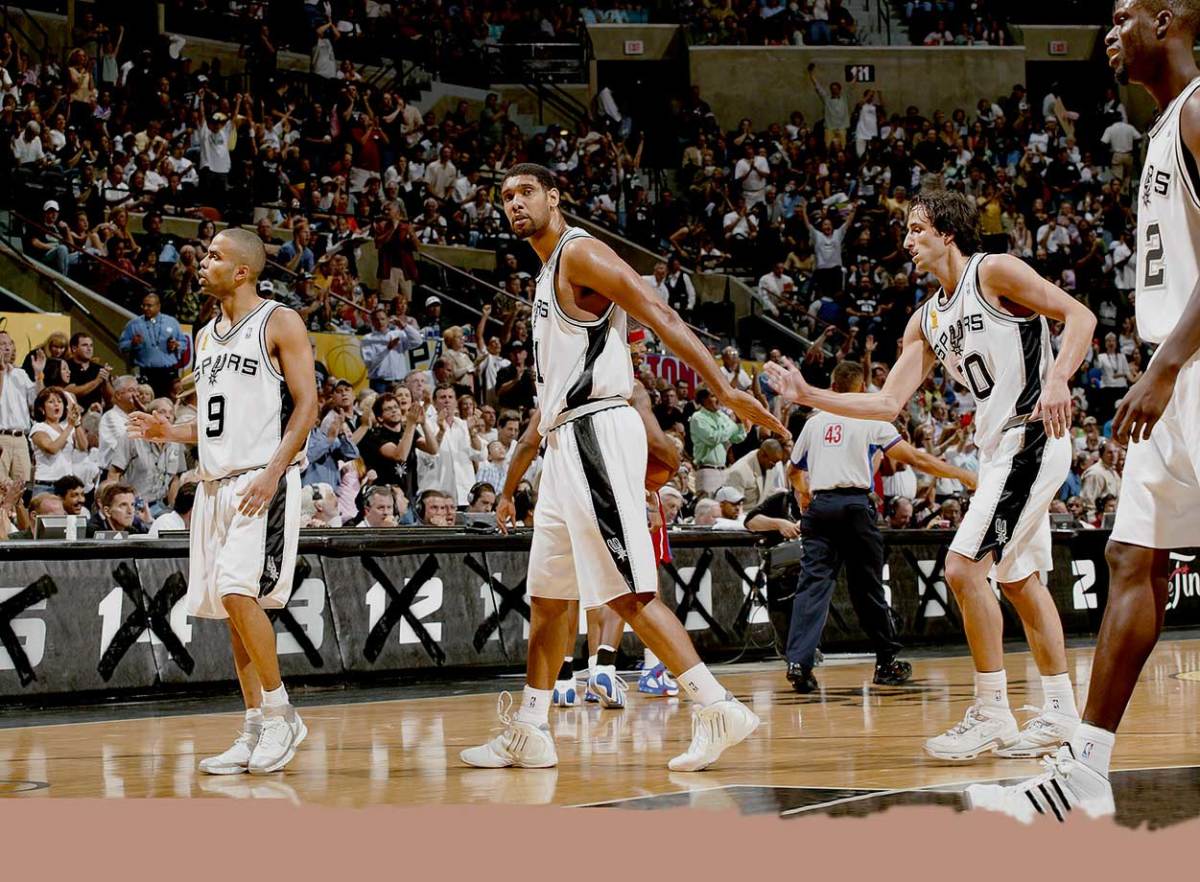
Tim Duncan gives Manu Ginobili a low five during Game 2 of the NBA Finals between the San Antonio Spurs and Detroit Pistons on June 12, 2005 in San Antonio.
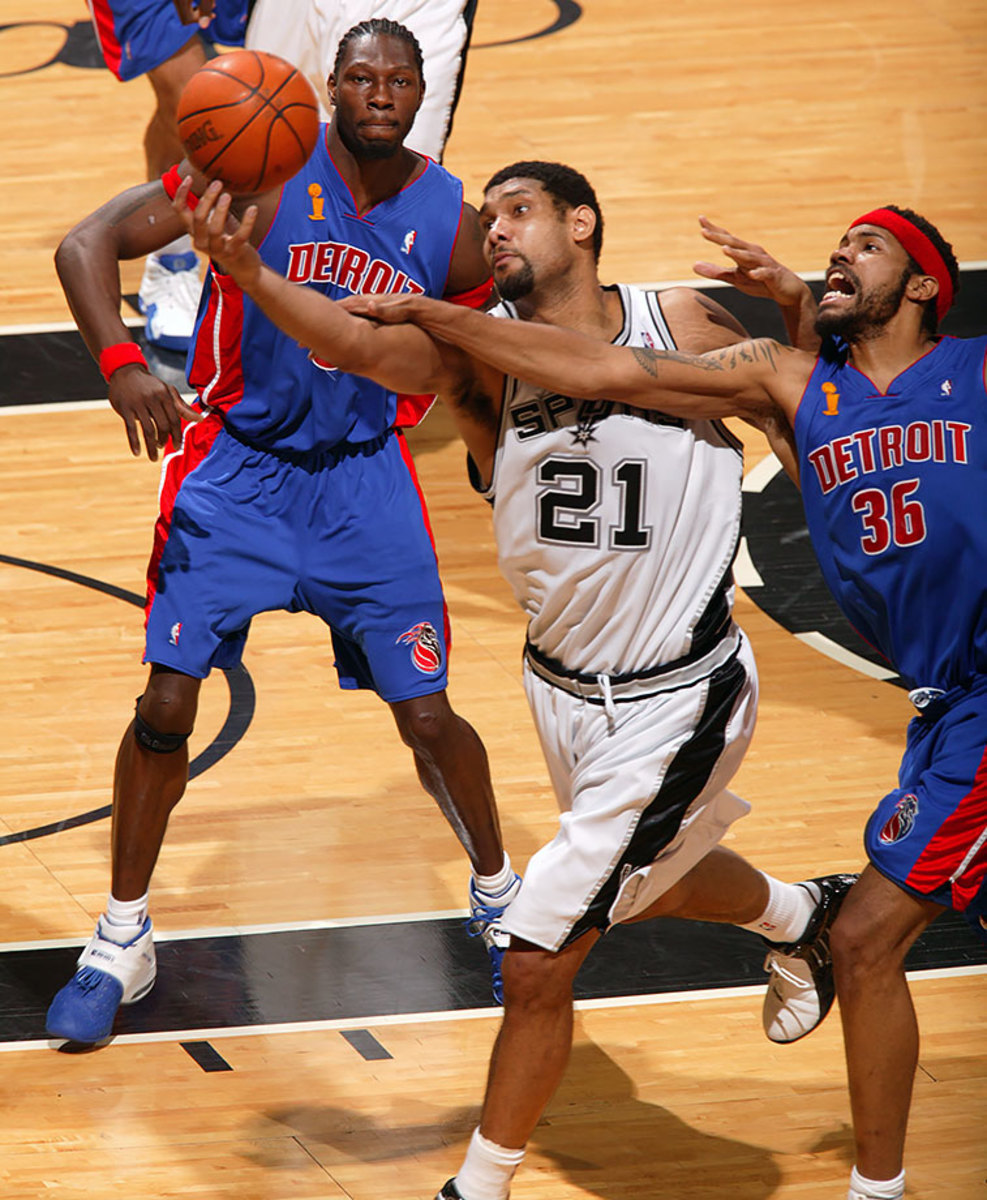
Tim Duncan drives to the basket against Rasheed Wallace during Game 7 of the NBA Finals between the San Antonio Spurs and Detroit Pistons on June 23, 2005 in San Antonio.
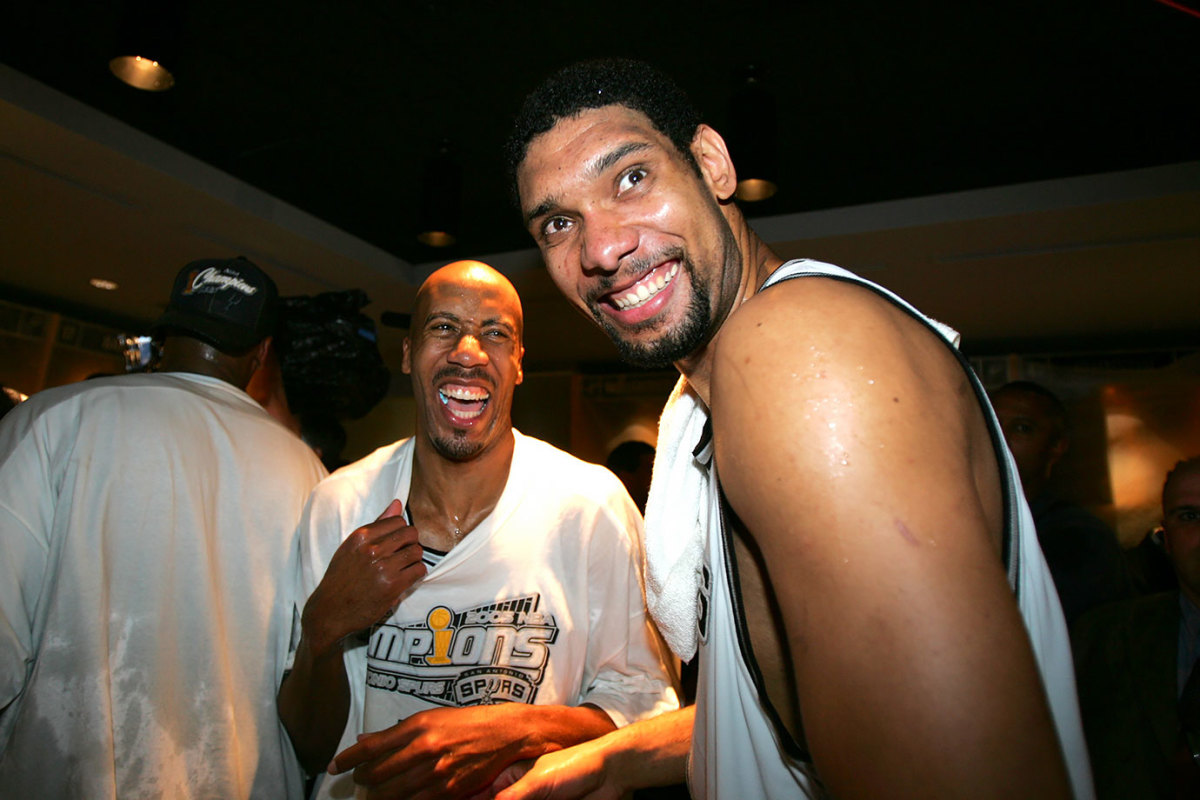
Tim Duncan and Bruce Bowen celebrate after winning Game 7 of the NBA Finals between the San Antonio Spurs and Detroit Pistons on June 23, 2005 in San Antonio.
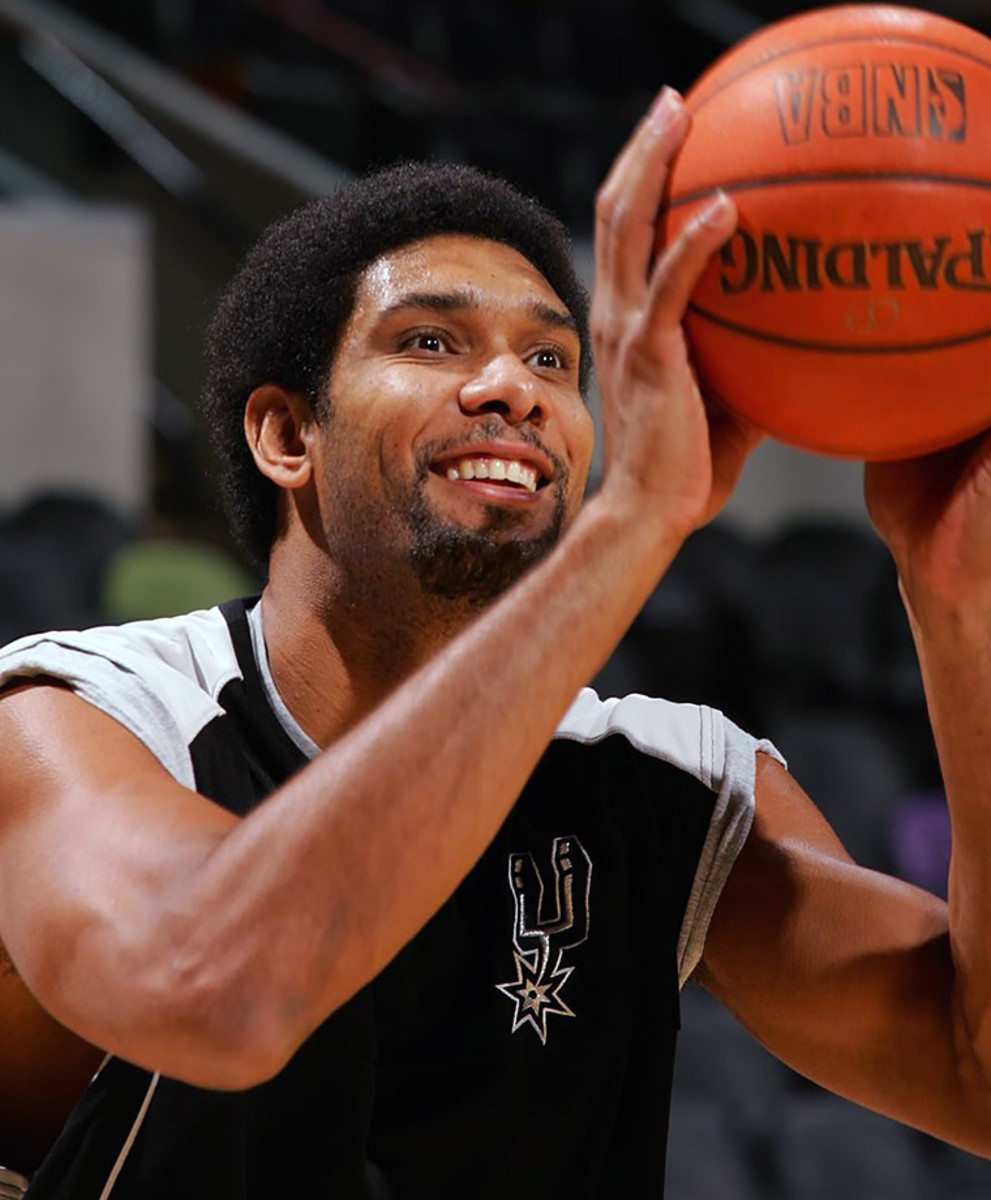
Tim Duncan smiles during warmups for the San Antonio Spurs game against the Cleveland Cavaliers on Nov. 4, 2005 in San Antonio.
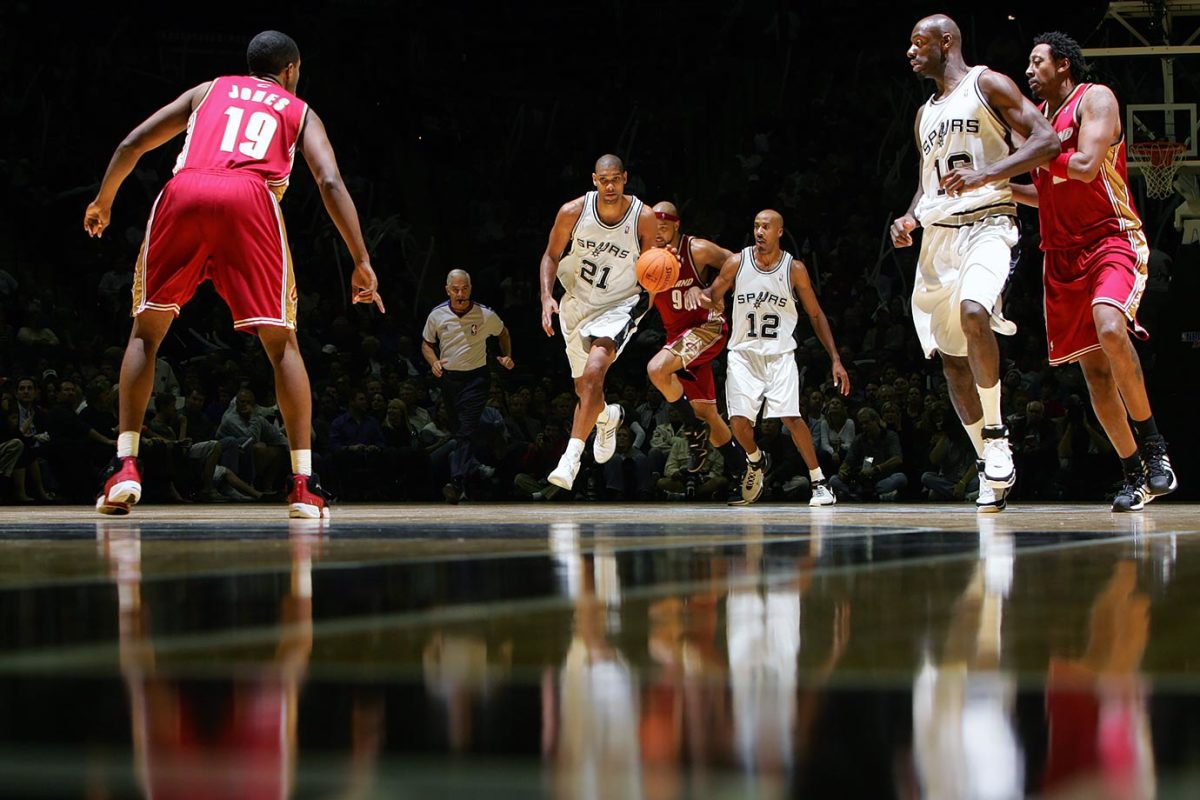
Tim Duncan moves the ball during the San Antonio Spurs game against the Cleveland Cavaliers on Nov. 3, 2006 in San Antonio.
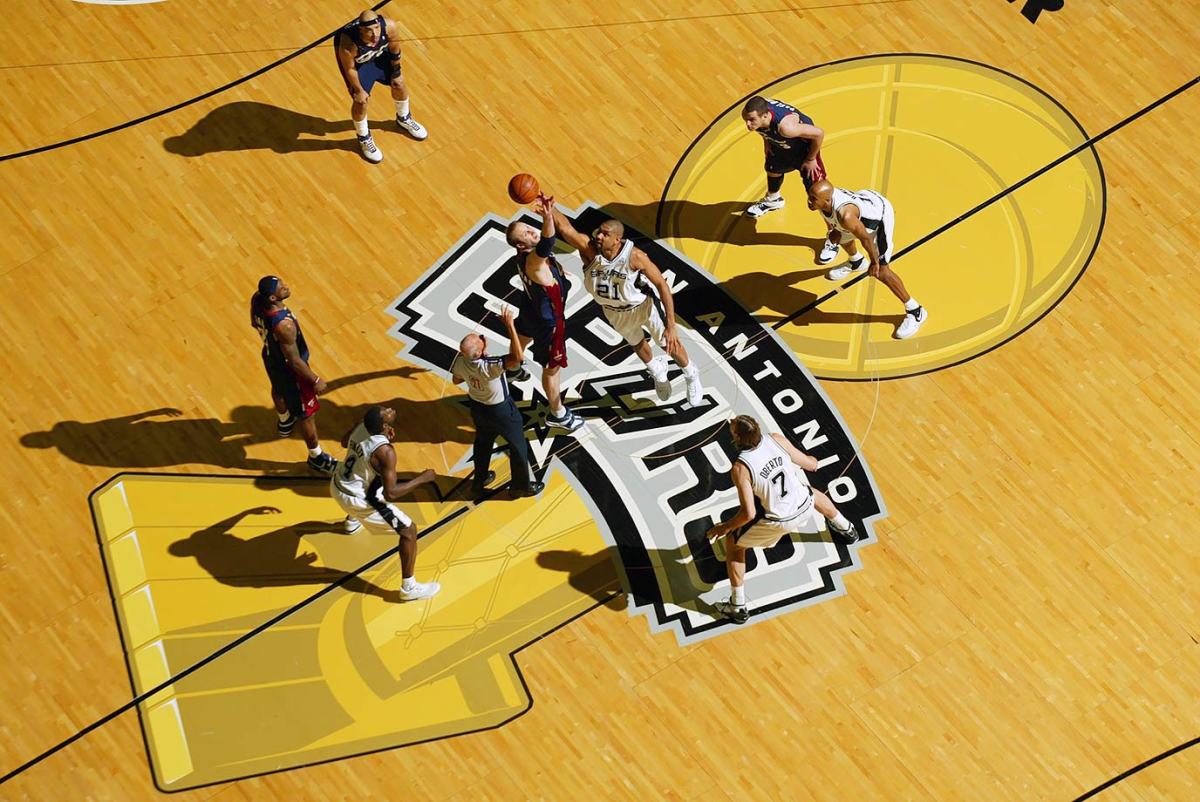
Tim Duncan takes the opening tip-off against Zydrunas Ilgauskas during Game 2 of the NBA Finals between the San Antonio Spurs and Cleveland Cavaliers on June 10, 2007 in San Antonio.
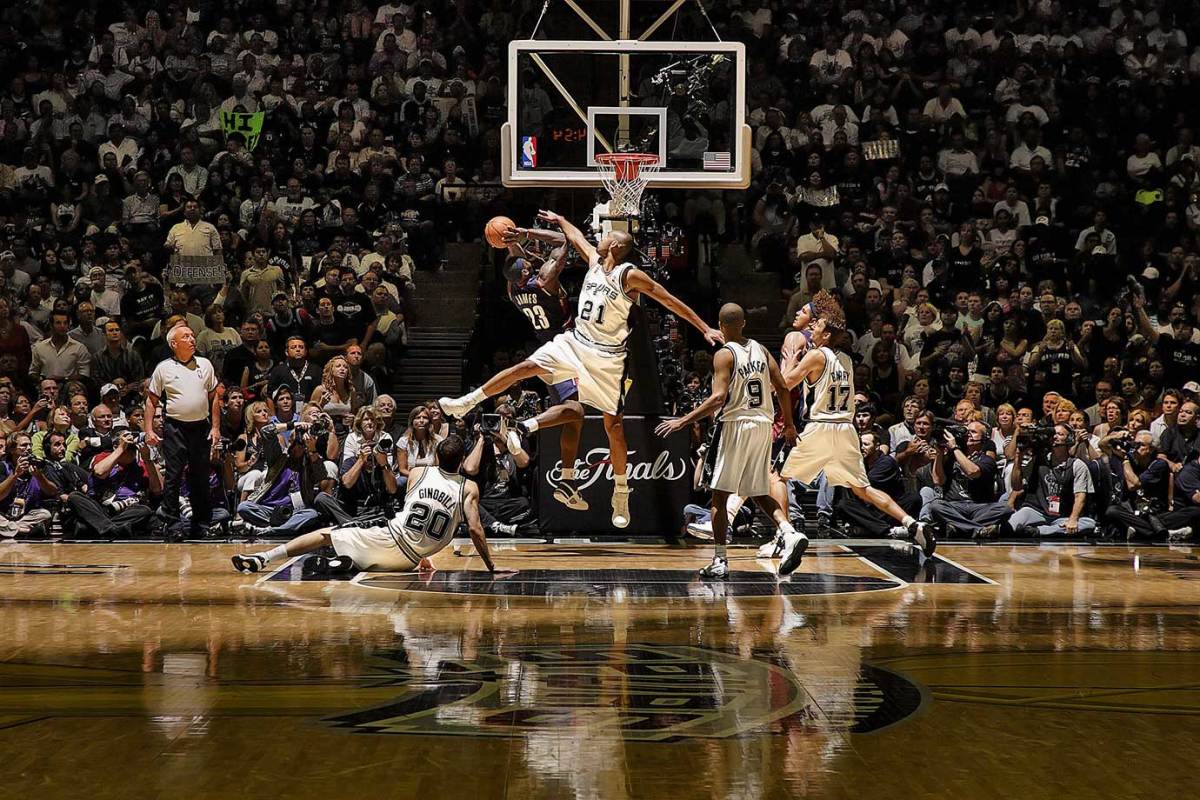
Tim Duncan defends against LeBron James during Game 2 of the NBA Finals between the San Antonio Spurs and Cleveland Cavaliers on June 10, 2007 in San Antonio.
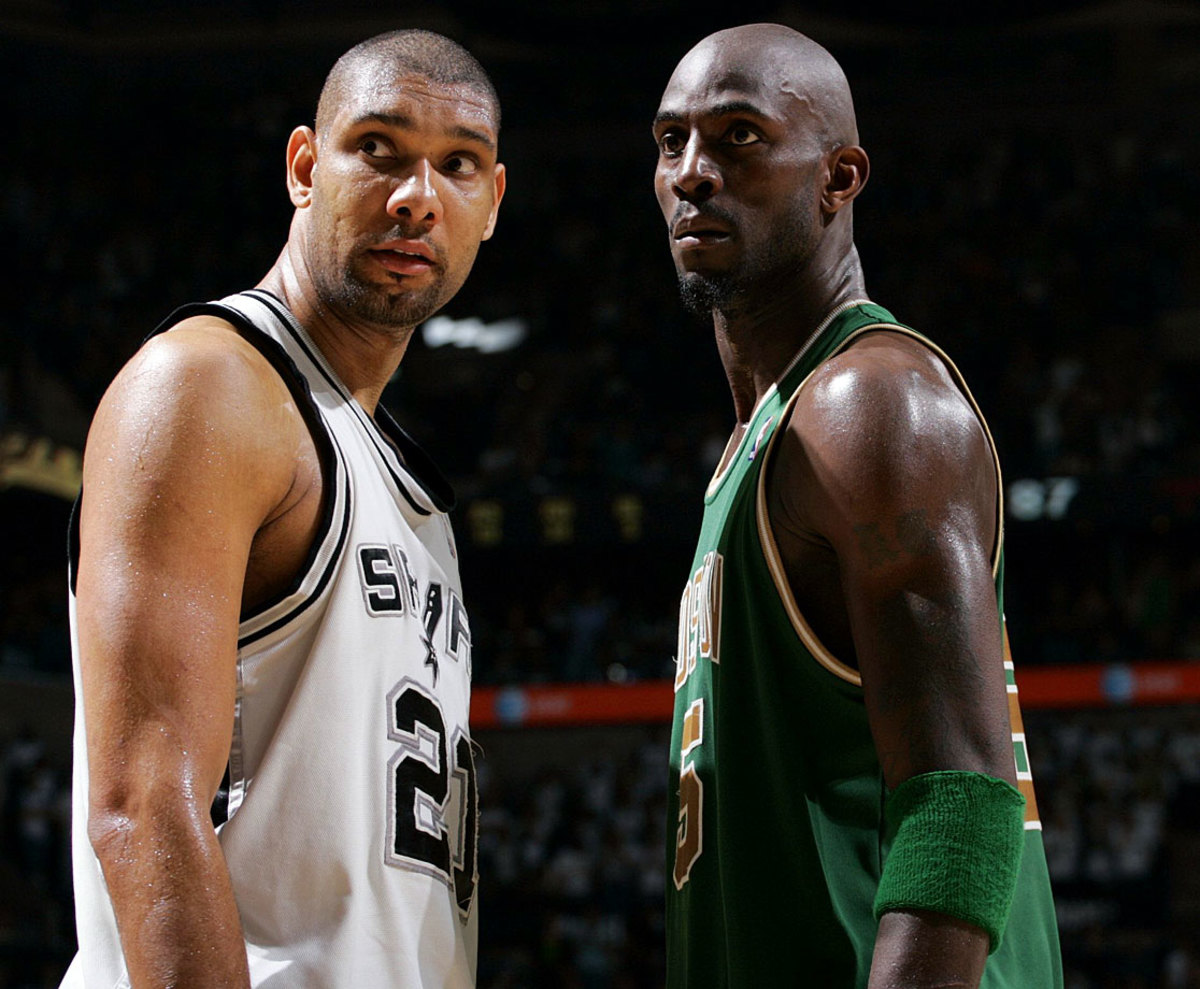
Tim Duncan and Kevin Garnett look on during the San Antonio Spurs game against the Boston Celtics on March 17, 2008 in San Antonio.
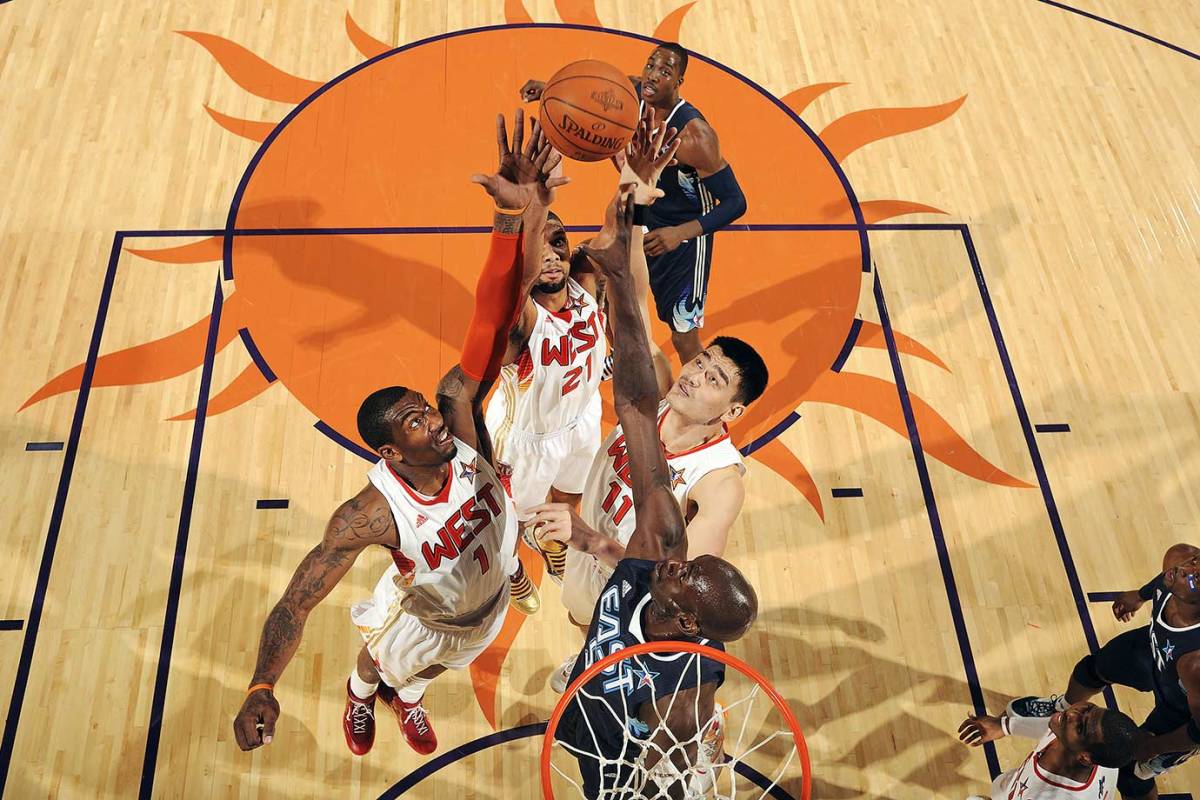
Amar'e Stoudemire, Tim Duncan and Yao Ming attempt to grab a rebound against Kevin Garnett during the NBA All-Star Game on Feb. 15, 2009 in Phoenix.
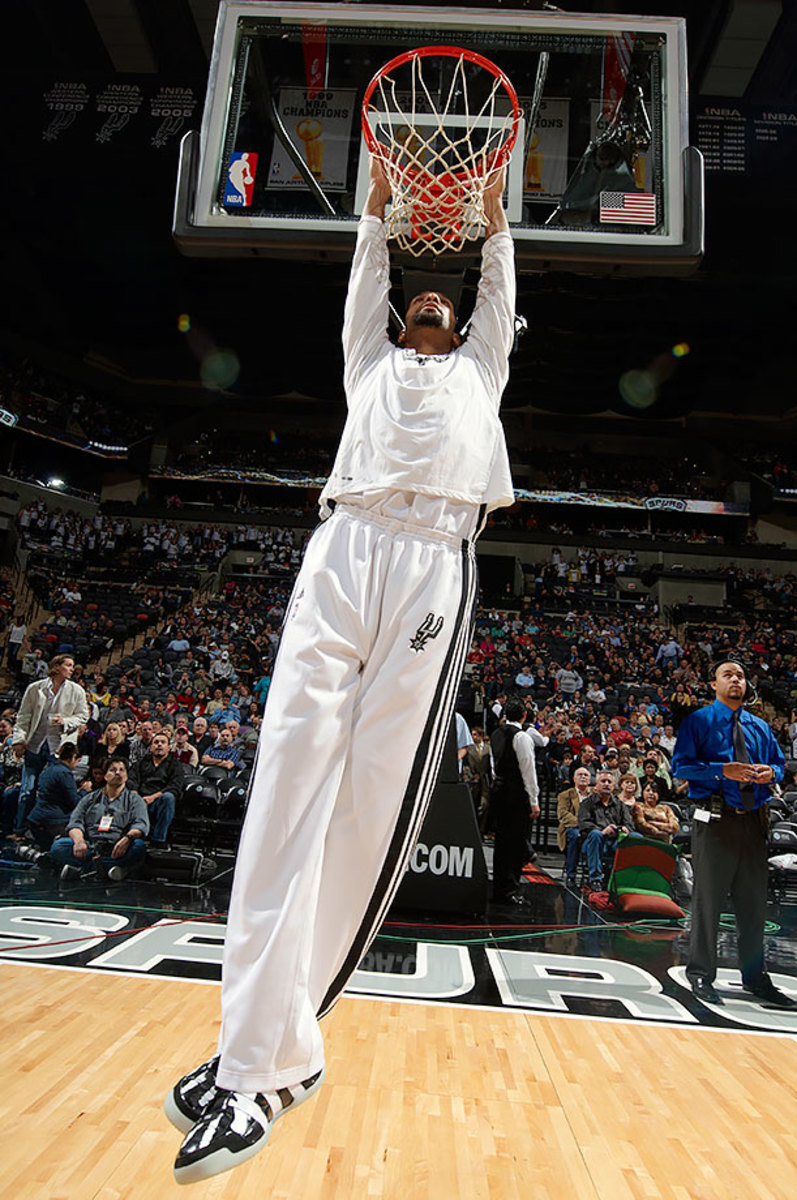
Tim Duncan stretches while hanging from the rim before the San Antonio Spurs game against the Utah Jazz on Jan. 20, 2010 in San Antonio.
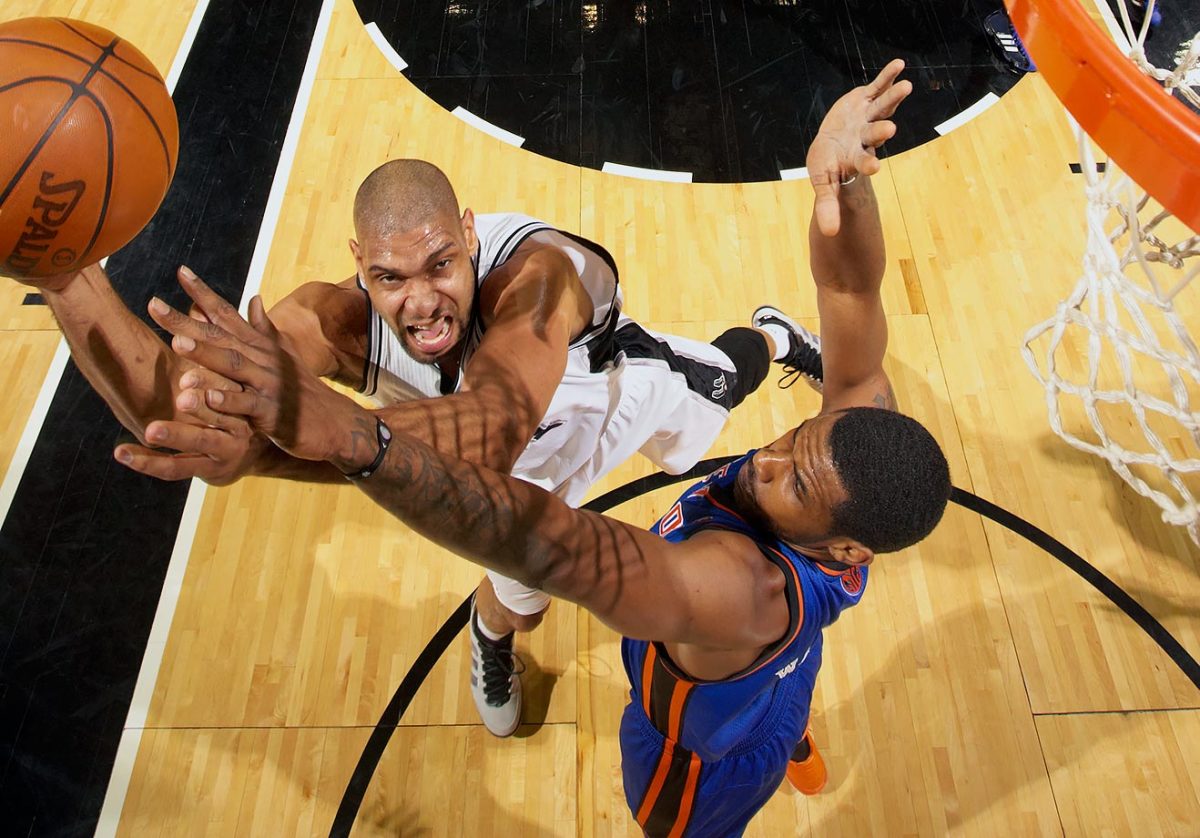
Tim Duncan drives to the basket during the San Antonio Spurs game against the New York Knicks on Jan. 21, 2011 in San Antonio.
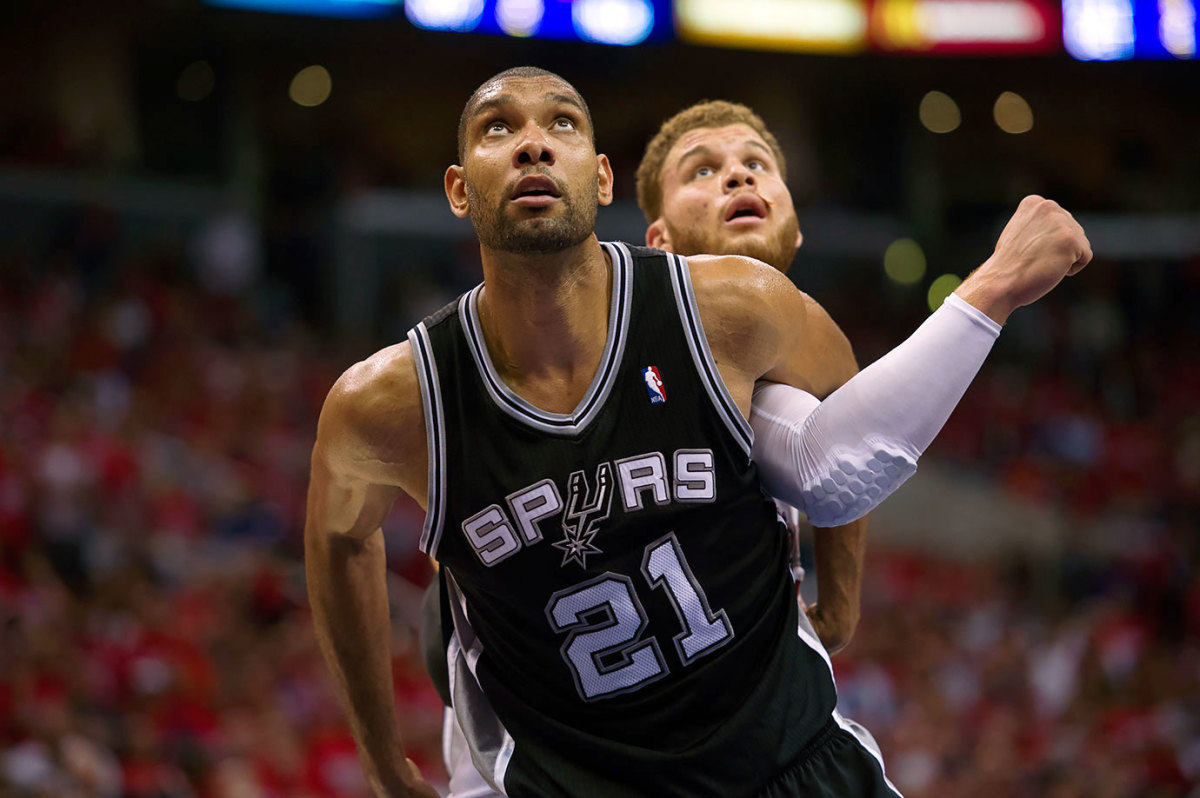
Tim Duncan boxes out Blake Griffin during Game 4 of the Western Conference Semifinals between the San Antonio Spurs and Los Angeles Clippers on May 20, 2012 in Los Angeles.
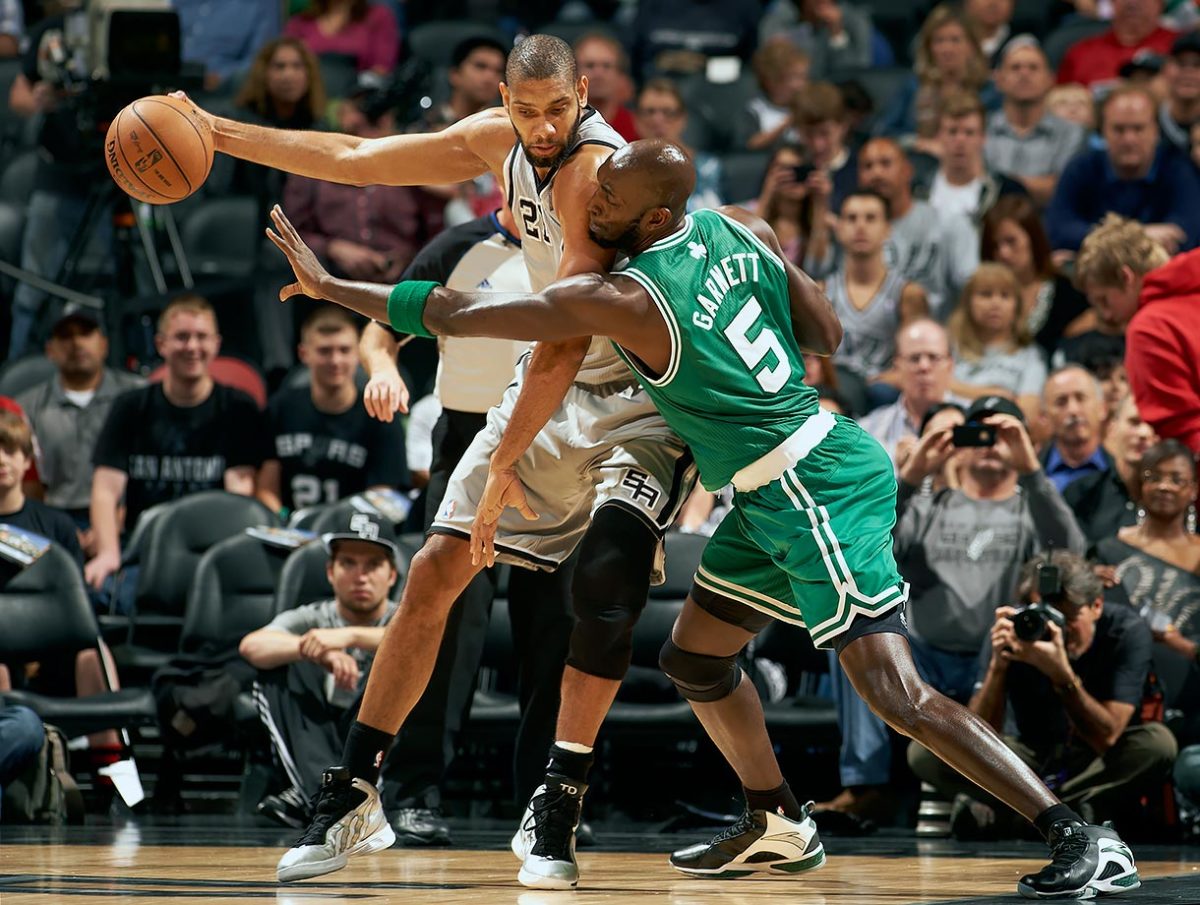
Tim Duncan keeps the ball away from Kevin Garnett during the San Antonio Spurs game against the Boston Celtics on Dec. 15, 2012 in Los Angeles.
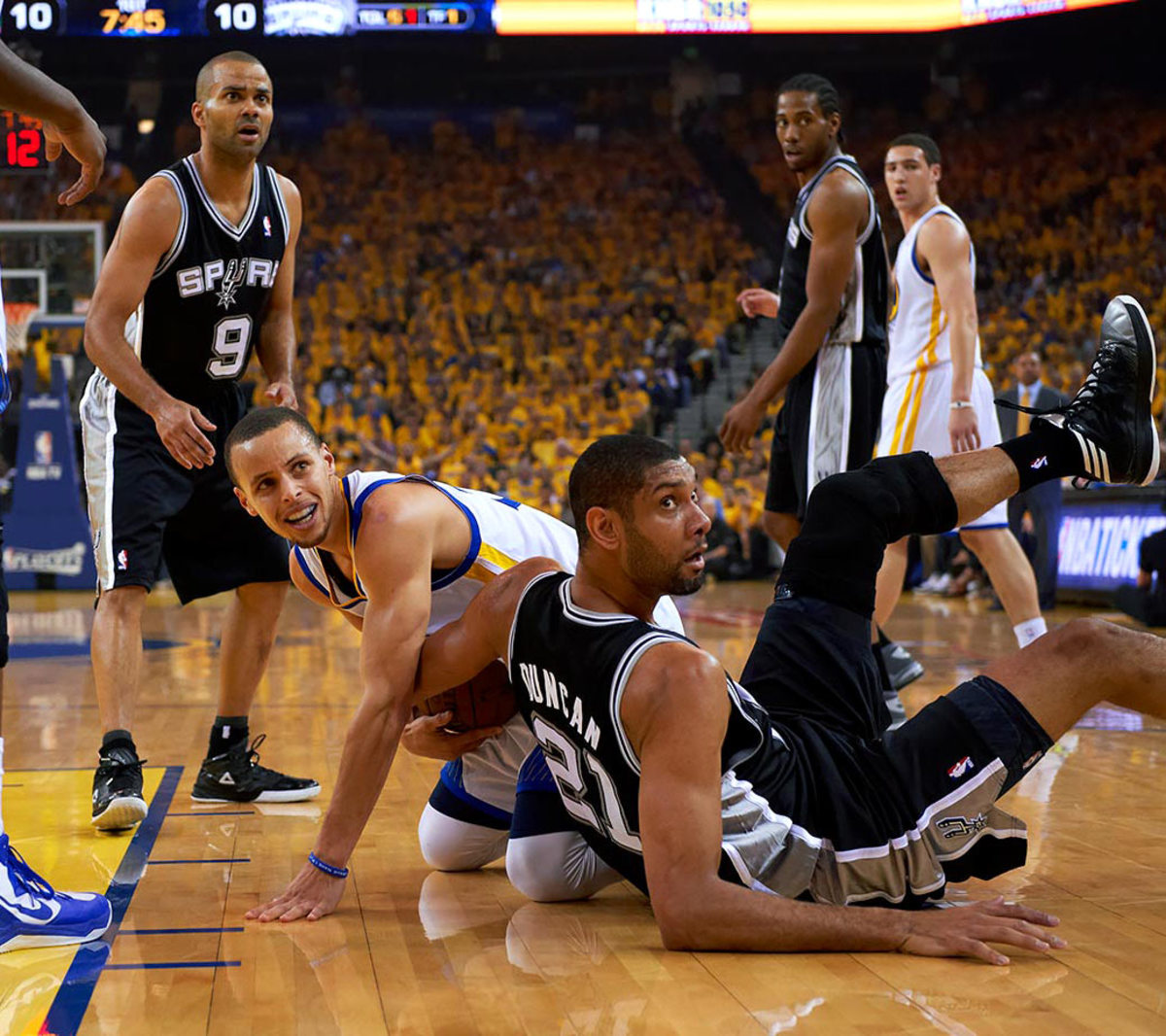
Steph Curry and Tim Duncan vie for the ball on the floor during Game 3 of the Western Conference Semifinals between the San Antonio Spurs and Golden State Warriors on May 10, 2012 in Oakland.
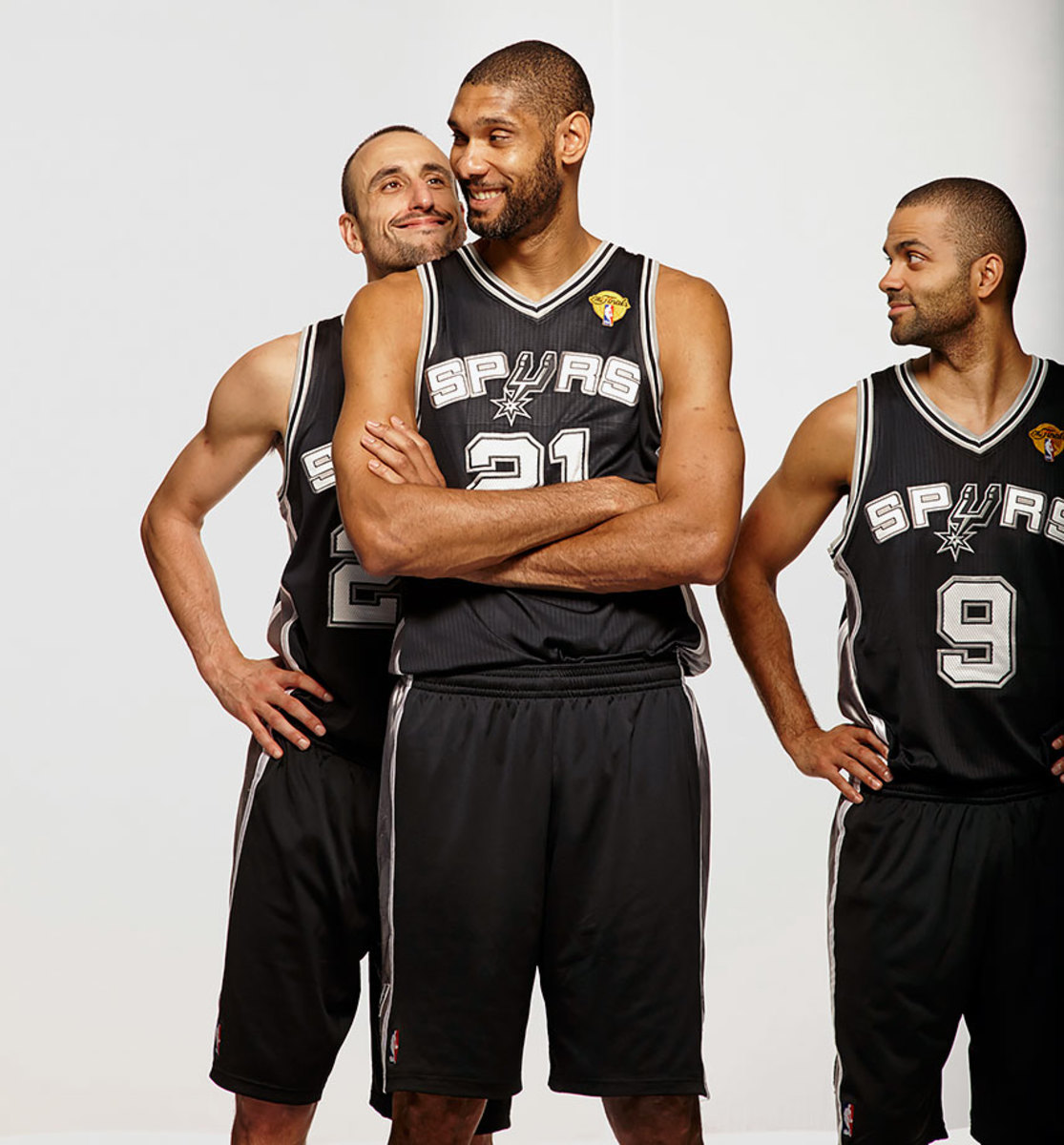
Manu Ginobili has some fun with Tim Duncan and Tony Parker during a photo shoot on June 2, 2013 in San Antonio.
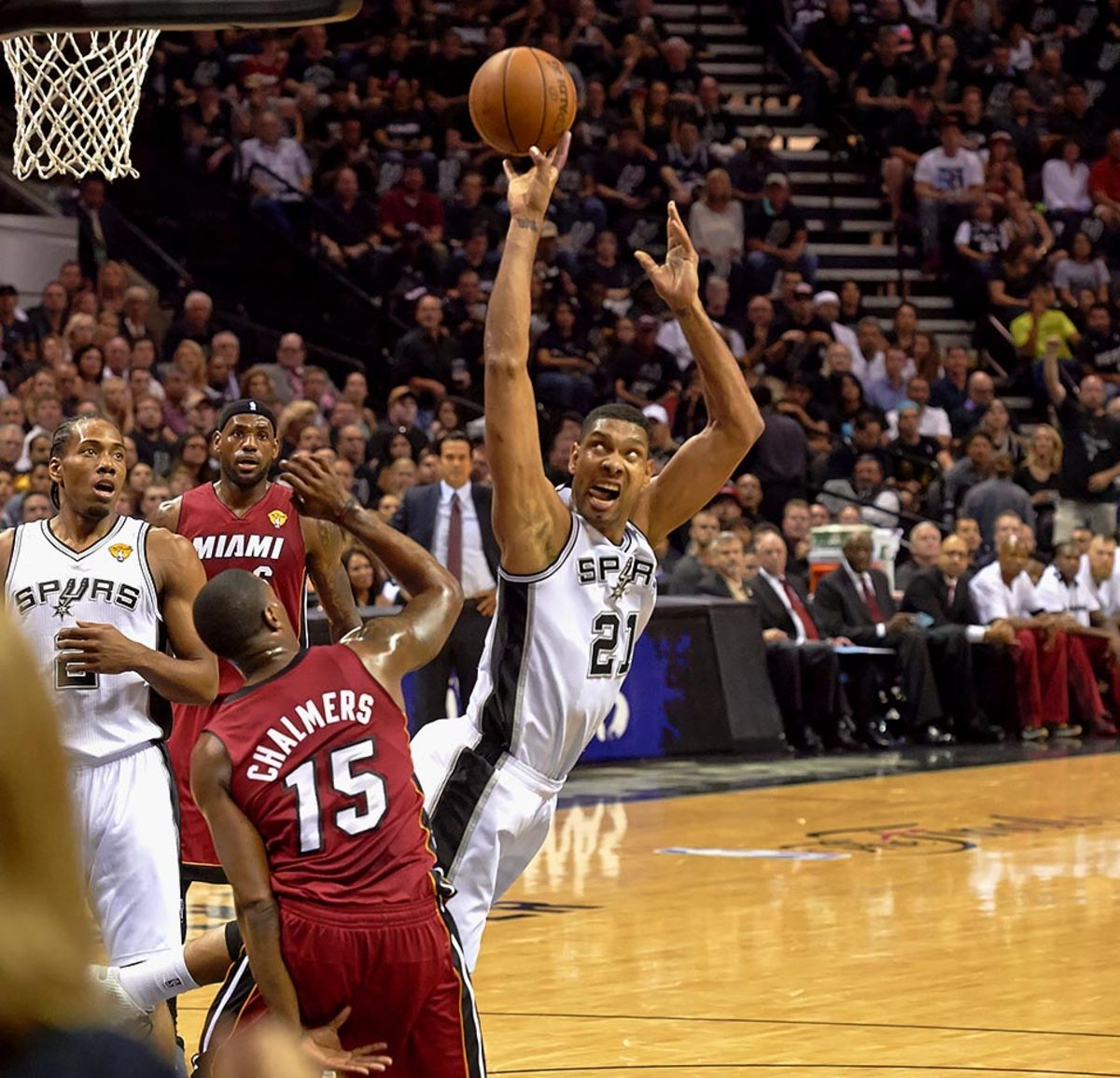
Tim Duncan shoots against Mario Chalmers during Game 1 of the NBA Finals between the San Antonio Spurs and Miami Heat on June 5, 2014 in San Antonio.
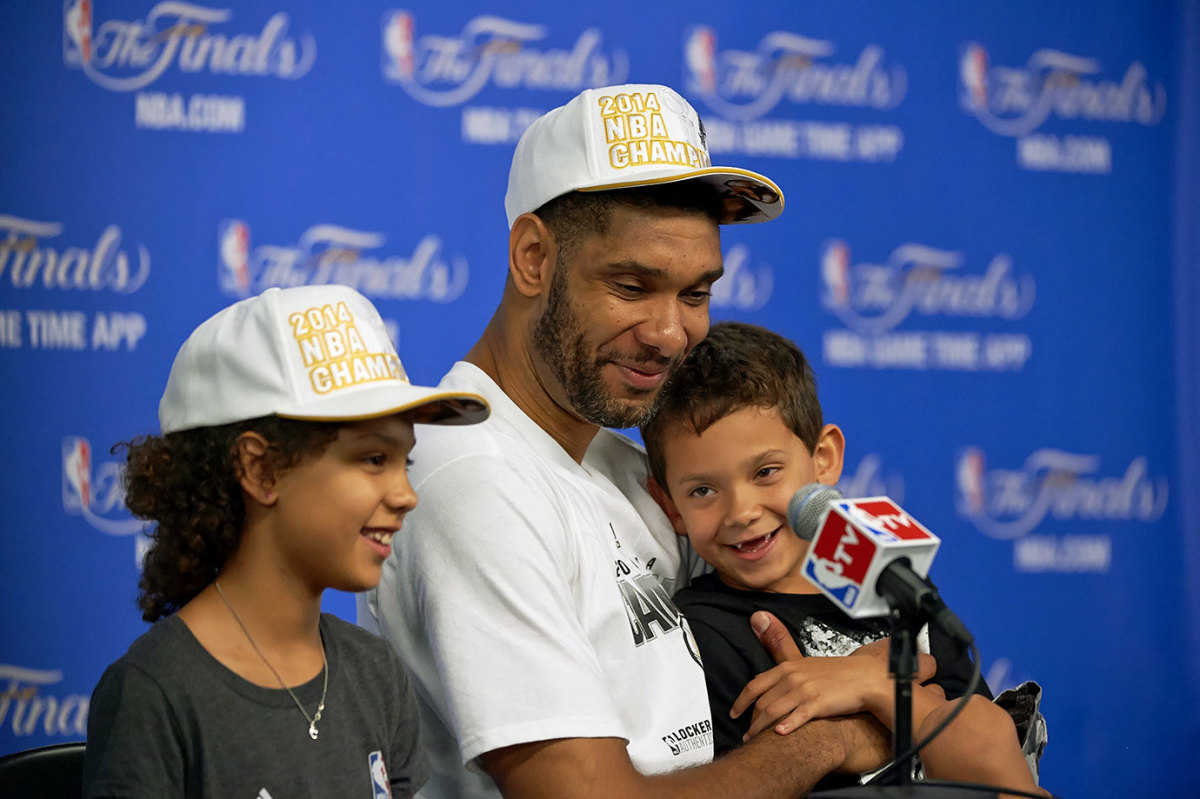
Tim Duncan smiles with his son Draven and daughter Sydney during a press conference following Game 5 of the NBA Finals between the San Antonio Spurs and Miami Heat on June 15, 2014 in San Antonio.
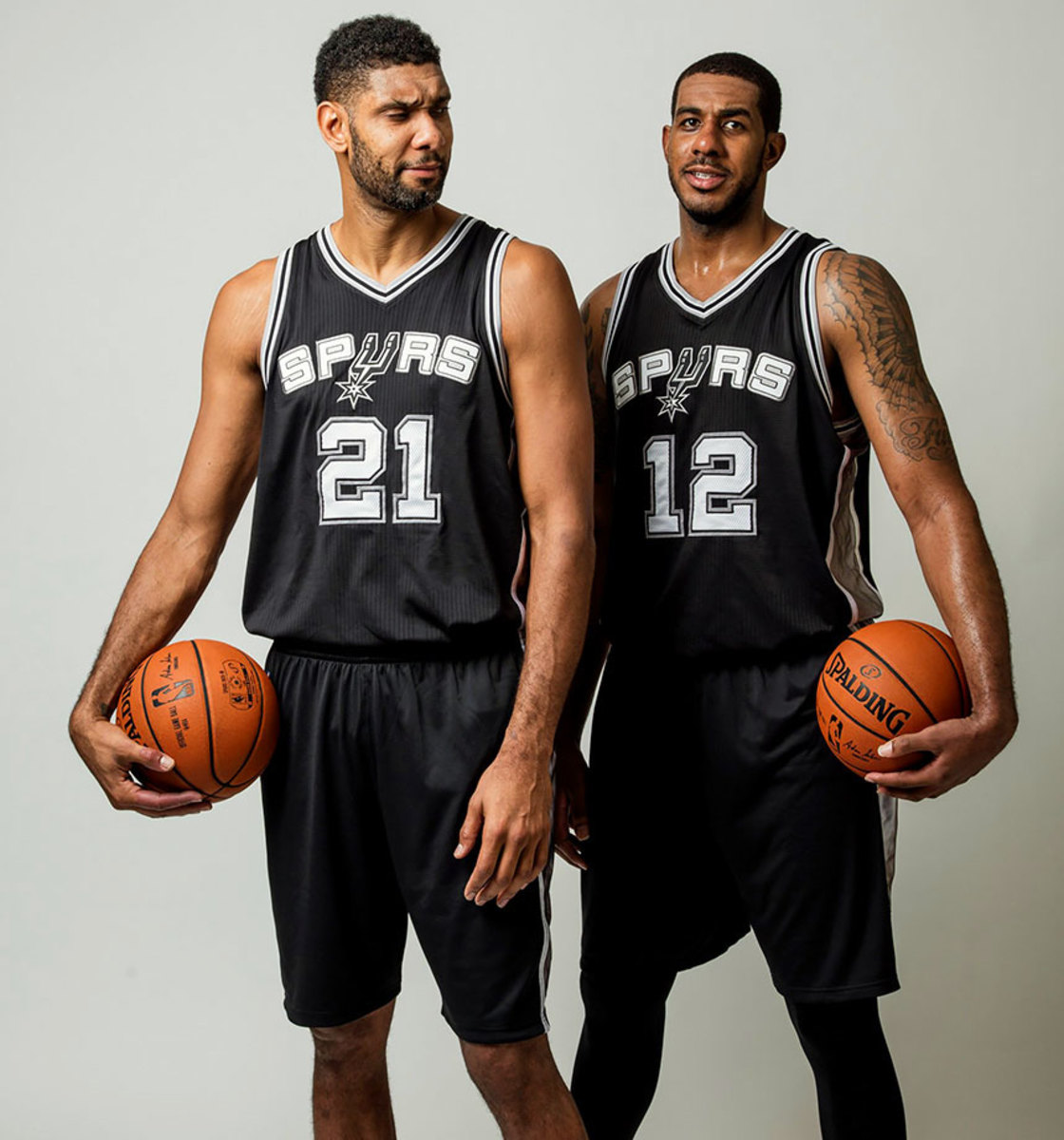
Tim Duncan gives LaMarcus Aldridge a look during a photo shoot on Oct. 16, 2015 in San Antonio.
It’s hard to argue that Duncan does not belong among the top 10 players of all time, his frontcourt versatility nonpareil. Feel free to join the protracted chat-room disquisitions on whether the 7-foot Duncan was a center or a power forward, but it comes down to this: He was both. He was not the first player to seamlessly blend the positions (Elvin Hayes and Bob McAdoo preceded him, and Kevin Garnett came along later), but Duncan is certainly the best combo four and five—call him a nine—that the league has ever seen.
The big men who rank higher than Duncan on most lists (Russell, Wilt Chamberlain and Abdul-Jabbar) were all pure centers, most comfortable with their back to the basket, possessors of hook shots and power moves that usually got them close to the hoop. Duncan had a power game, too, though he was just as dangerous facing up from 18 feet. He generally didn’t break his defender down off the dribble, but he was skilled at finding space and getting off one of his perfectly targeted bank shots. He was by no means a master of the three-point shot (he converted only 17.9% of his 168 career attempts). but, fittingly, one of his three-point makes is among the most memorable shots in franchise history—a buzzer beater that gave San Antonio a 117–115 double-overtime victory over the Suns in Game 1 of the 2008 Western Conference first round. (Duncan had 40 points in that game, and the Spurs went on to win the series in five.)
• Kawhi Leonard gives second wind to Spurs dynasty
As befitting his metronomic nature, Duncan’s numbers are comically consistent. Beginning in his rookie year of 1997–98, he put up 13 straight double double seasons, and over the next five he still averaged double figures in points and had rebound averages of 8.9, 9.0, 9.9, 9.7 and 9.1. He was slightly better in the postseason—he played in 251 playoff games, second all time to Derek Fisher’s 259—but what’s more enlightening is his stats in 15 All-Star games. He was co-MVP of the game once (with Shaquille O’Neal in 2000), and though he didn’t score much after that, he still averaged double figures in rebounds. See, somebody has to go get it so everybody else can shoot.
It’s a minor sin—which Spurs coach Gregg Popovich would no doubt point out—that the discussion of Duncan the player has gone on this long without mention of his defense. As with Russell and Garnett, D is what moves Duncan into the basketball pantheon.
Duncan guarded centers and power forwards (sometimes even small forwards) with equal success. And as the NBA became more and more of a high pick-and-roll game, Duncan accepted the extra responsibility of getting involved at the perimeter, while never abandoning basket responsibility. Nobody was better than Duncan at being both an advance guard and the final fortress.
He accomplished that by being a master of positioning, rarely overcommitting, always thinking, always talking. (Yes, he loved to talk on the court.) This is a vast oversimplification, but over the years the San Antonio defense was predicated upon most aggressively thwarting the three-point shot and the drive and allowing the mid-range jumper, the weakest offensive weapon in the NBA.
If one action sequence of Duncan runs through my head, it’s this:
He creeps out beyond the foul line on a pick-and-roll—showing, in basketball terminology—so that he’s ready to pick up the ballhandler on a switch. Pick-and-roll discouraged. The ball is reversed, there’s a drive to the basket and Duncan recovers to almost gently nudge away the shot. Indeed, the vast majority of his 3,020 career blocked shots (an average of 2.2 per game) were not dramatic swats; they were more like “taps” triggering a fast break that he was likely to join, often setting a screen if the Spurs went into their effective secondary break.
• Nash assist delivers Durant to Warriors | Top free agents left
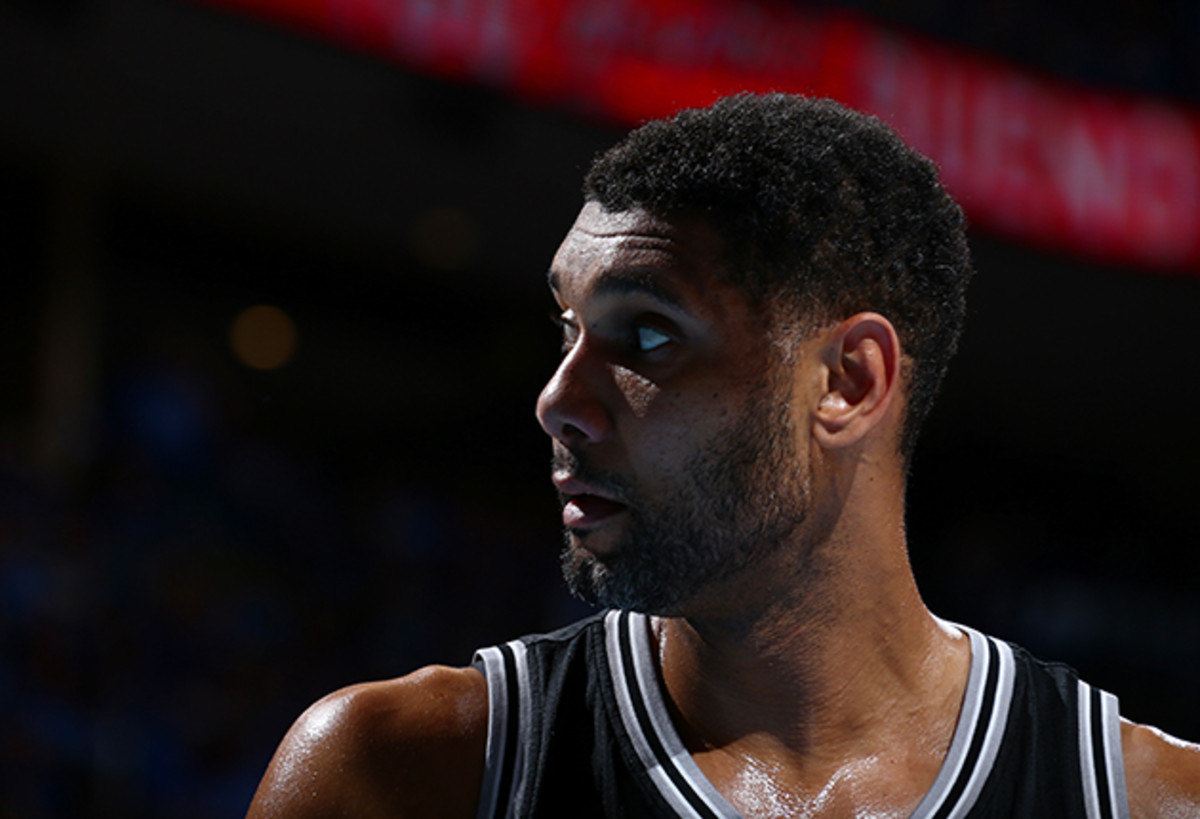
Not a sexy vision, for Duncan was not a sexy player. But if he did not put the fun in Big Fundamental, he certainly put the mate in teammate. Around San Antonio, that might be his most enduring legacy. “When the Guy is just one of the guys,” Spurs defensive stalwart Bruce Bowen once told me, “man, it makes a huge difference. Tim has always been that way, never changed.” It’s often been told that Popovich would climb all over Duncan in practice, sometimes with legitimate pique but other times just to set an example. Duncan always accepted it.
That’s one thing. But accepting a benching in crunch time of a championship series is something else. That’s what happened to Duncan in Game 6 of the 2013 Finals when Popovich took him out in favor of Boris Diaw to compete against a small Heat lineup. It is hard to imagine another future Hall of Famer not only stoically accepting it—Duncan’s bench face was the same mask he always wore—but also later defending the move. The Spurs blew a lead in that game, then lost Game 7. And no matter what Popovich or Duncan says, the substitution was a mistake.
That sturdy, I’ve-got-everybody’s-back element is now gone from the Spurs, who were often (and rightly) held up as one of the sports world’s model franchises. But it’s gone from the game, too. It’s hard to imagine that the Duncan blueprint will be duplicated—a four-year college player who comes into the league with a skill set almost fully developed, never bows to free-agent seduction, wins consistently, doesn’t change on or off the court, and then almost tiptoes out the door, no doubt flashing a sly smile at how easily he escaped.
But listen to this, Tim Duncan: Just because you won’t miss us doesn’t mean we won’t miss you.
